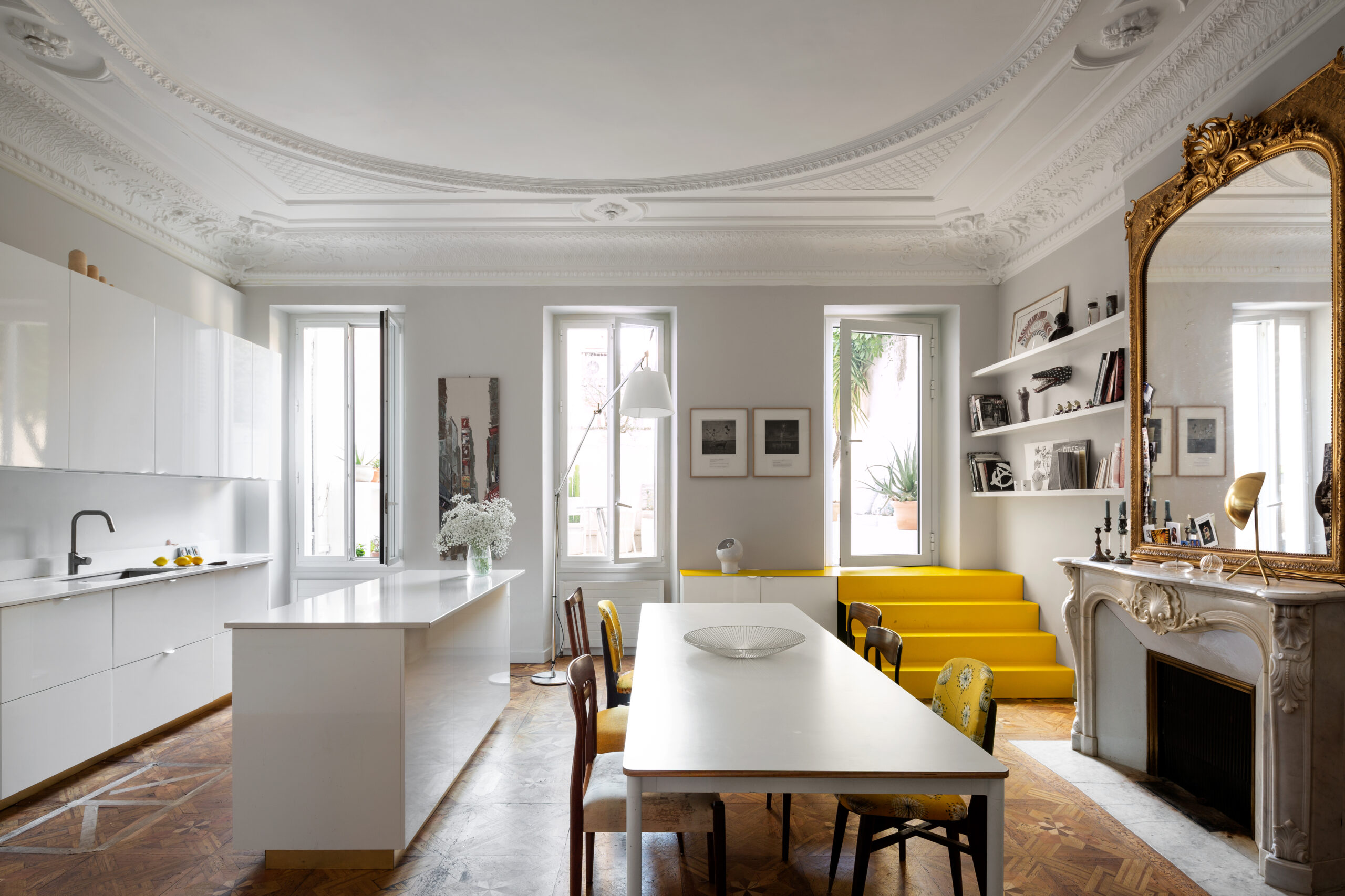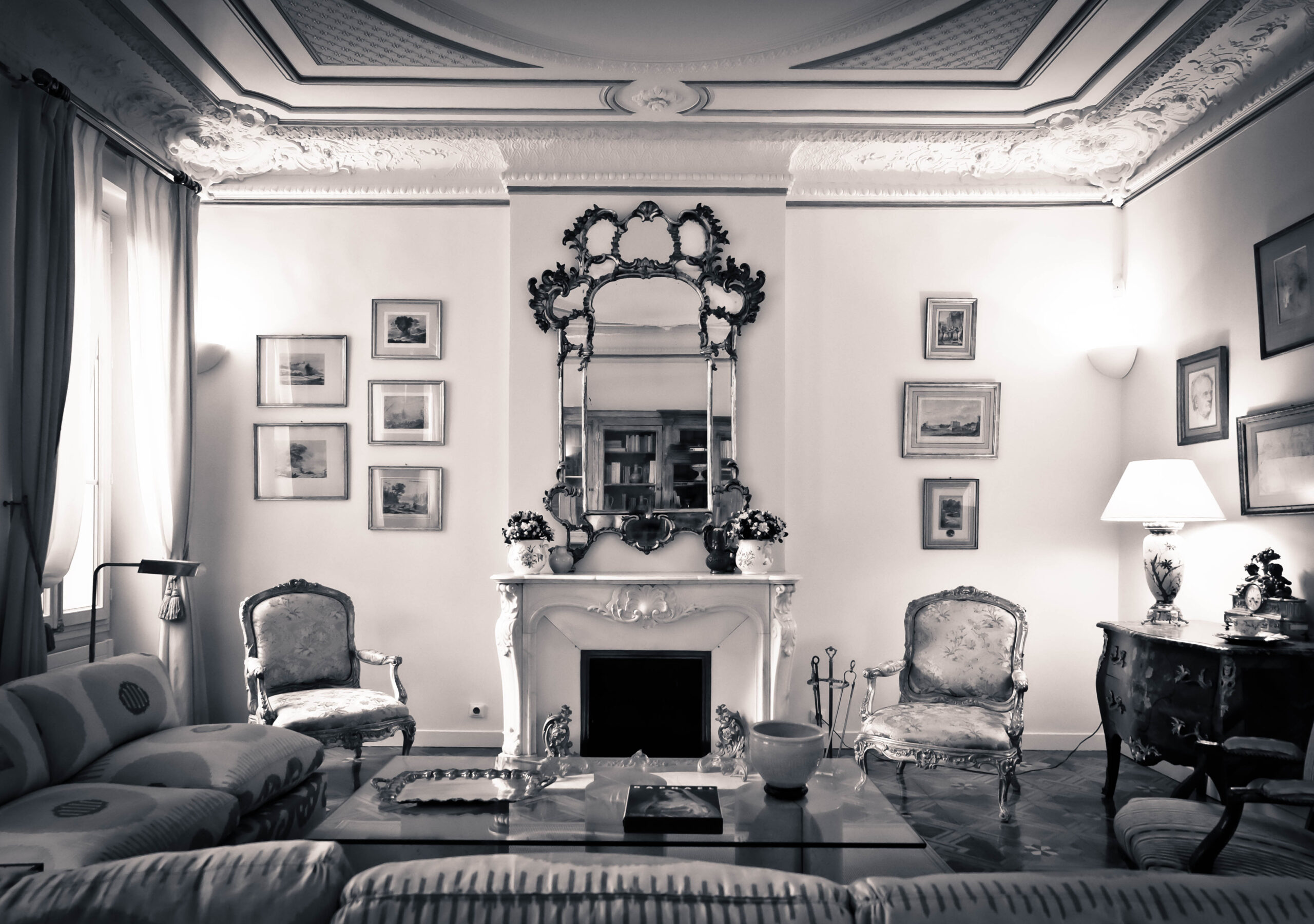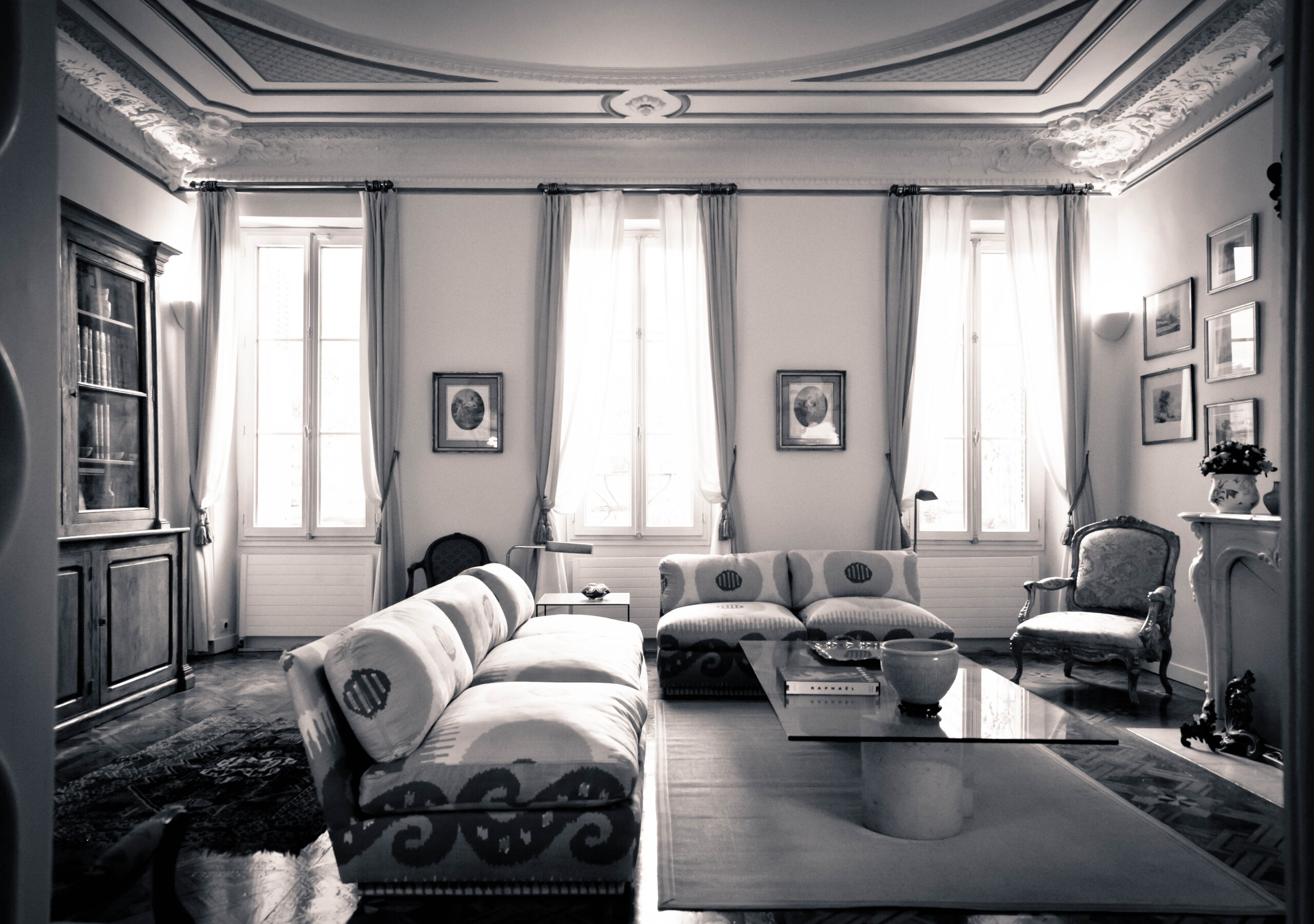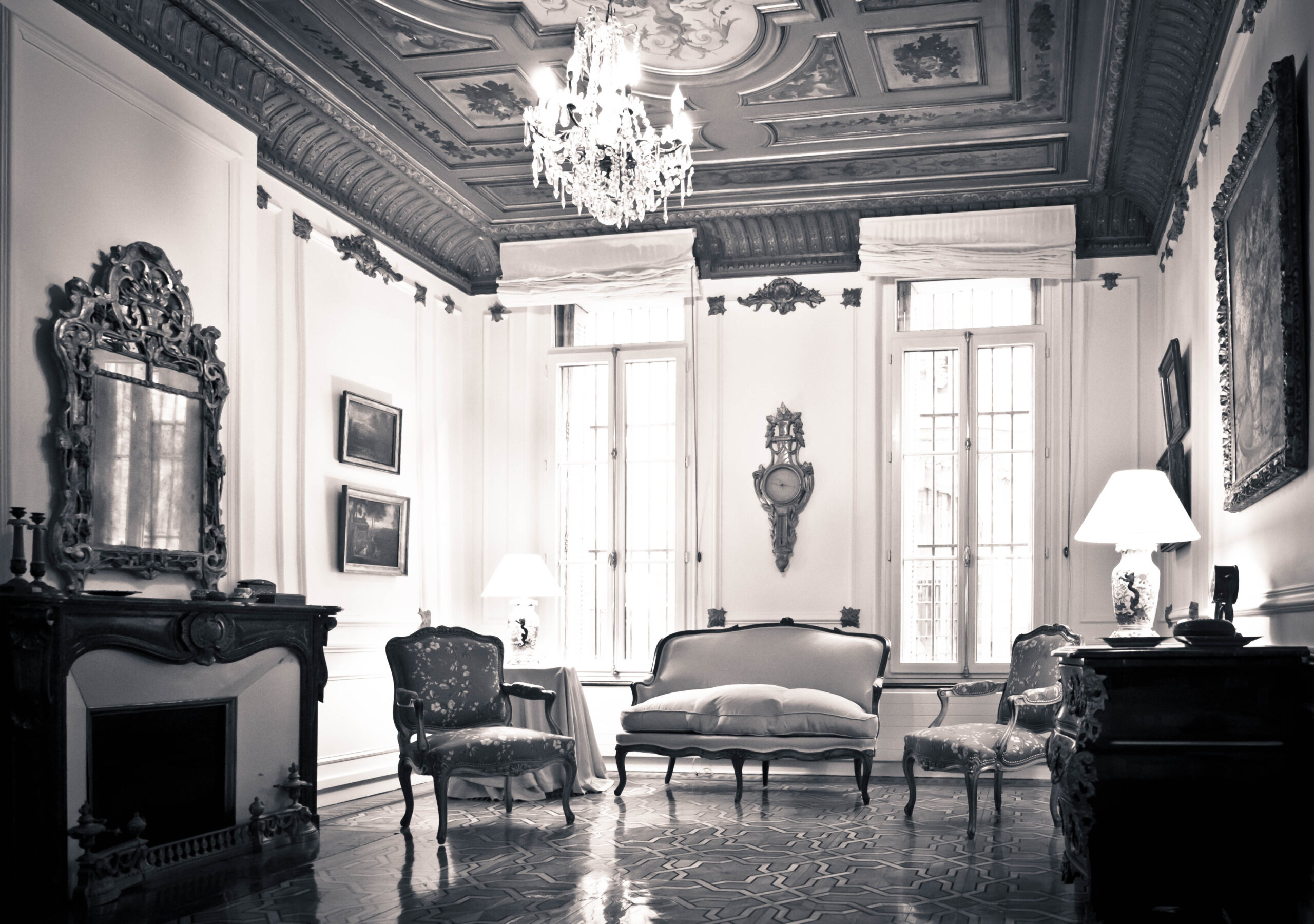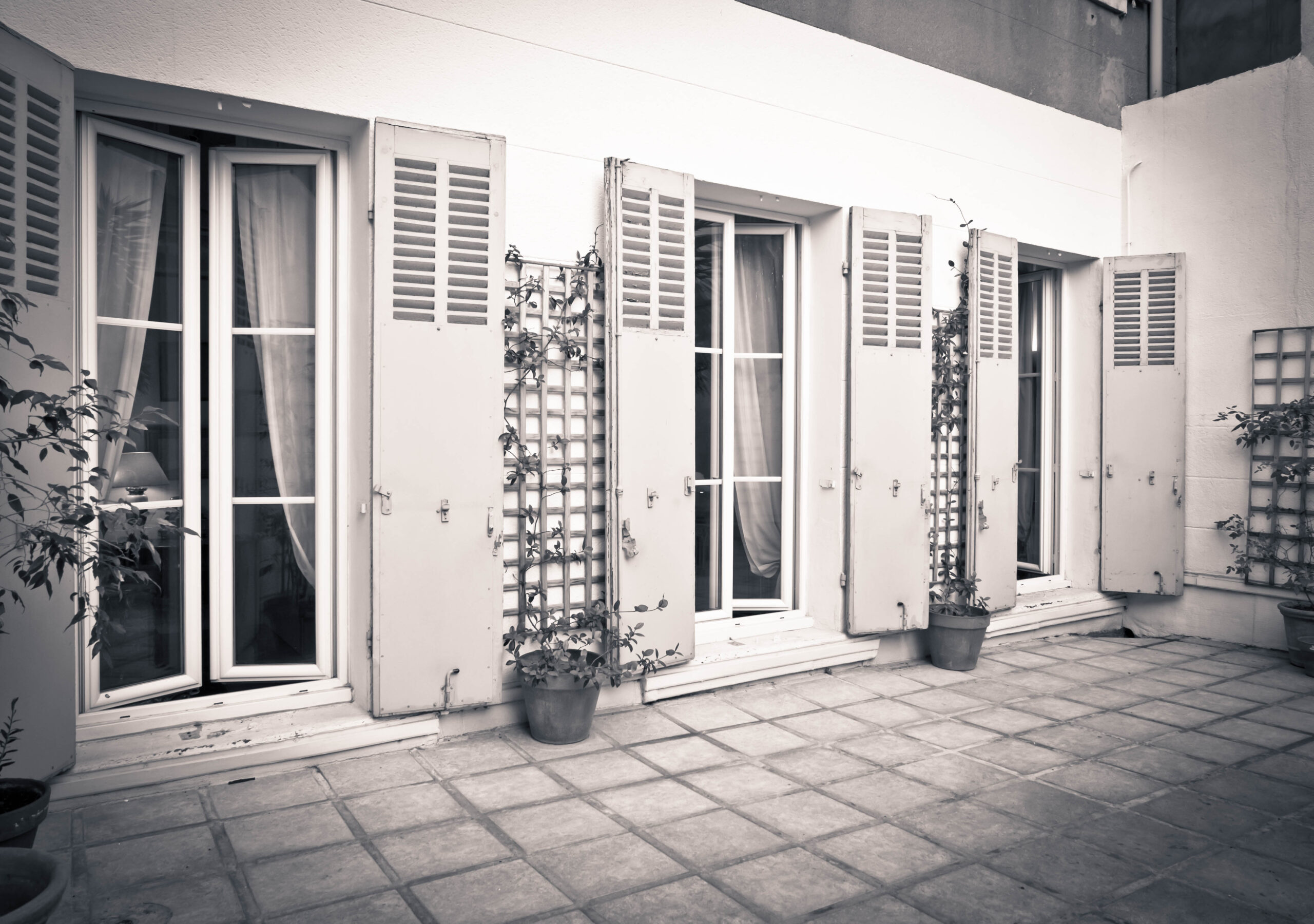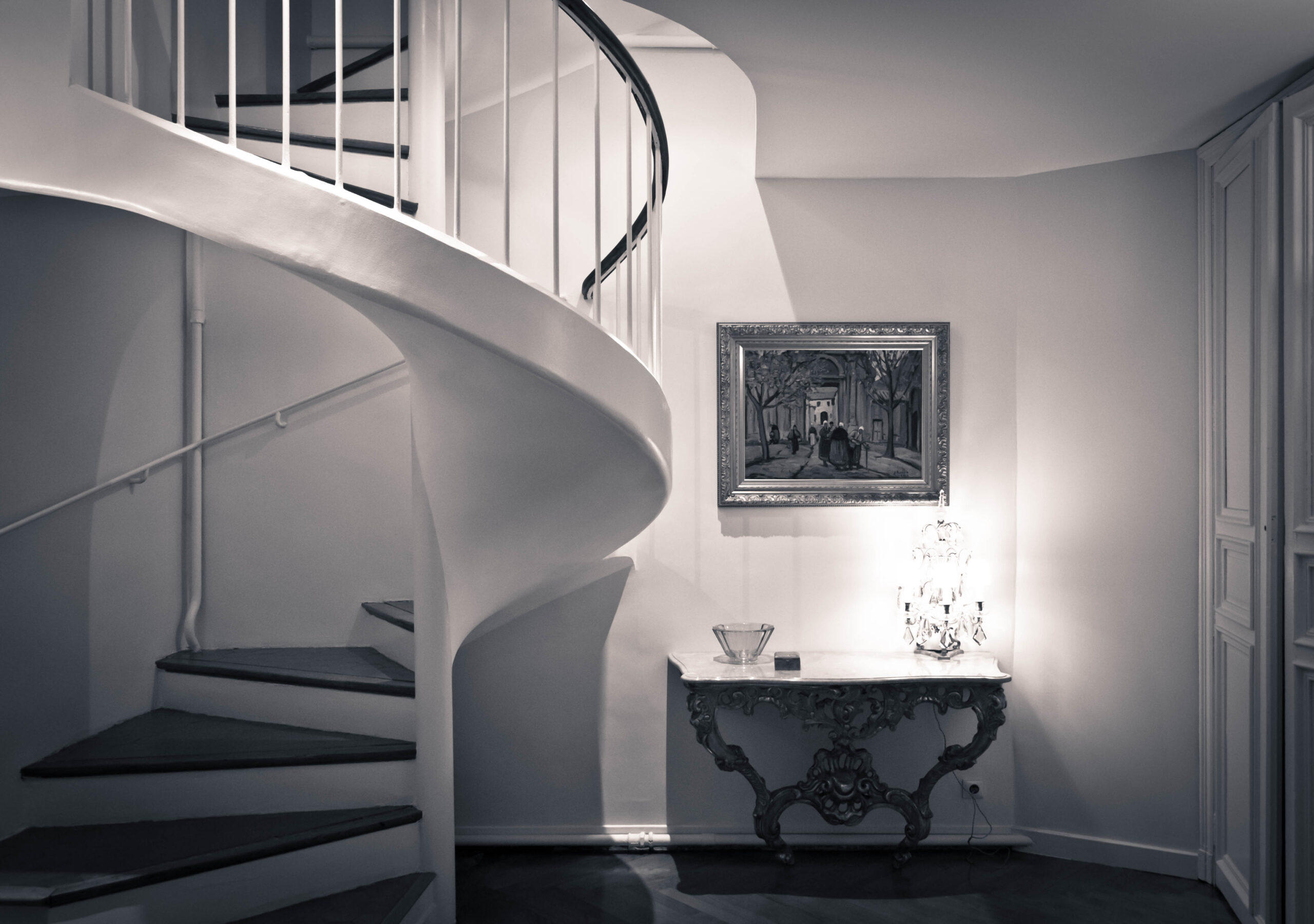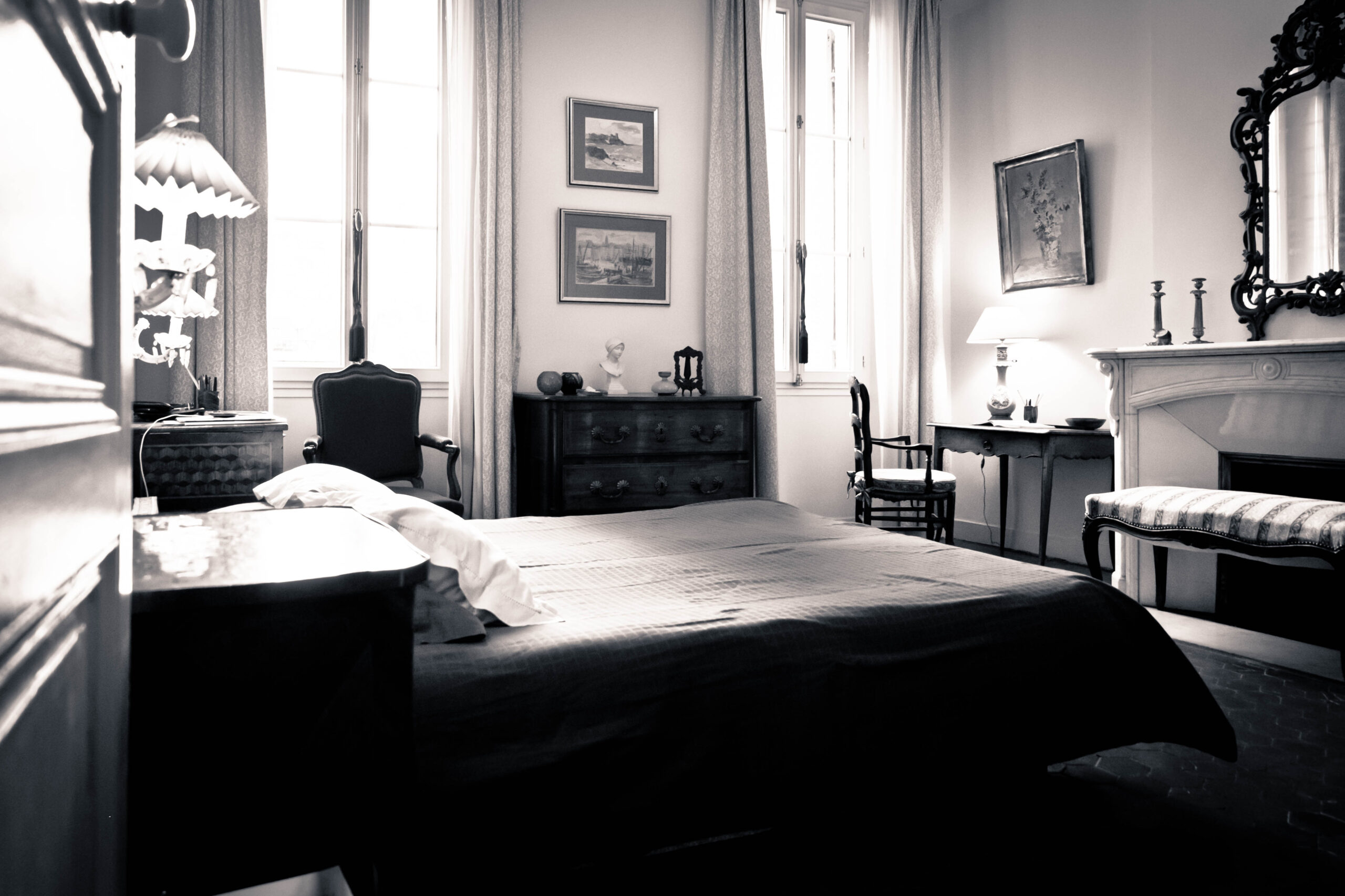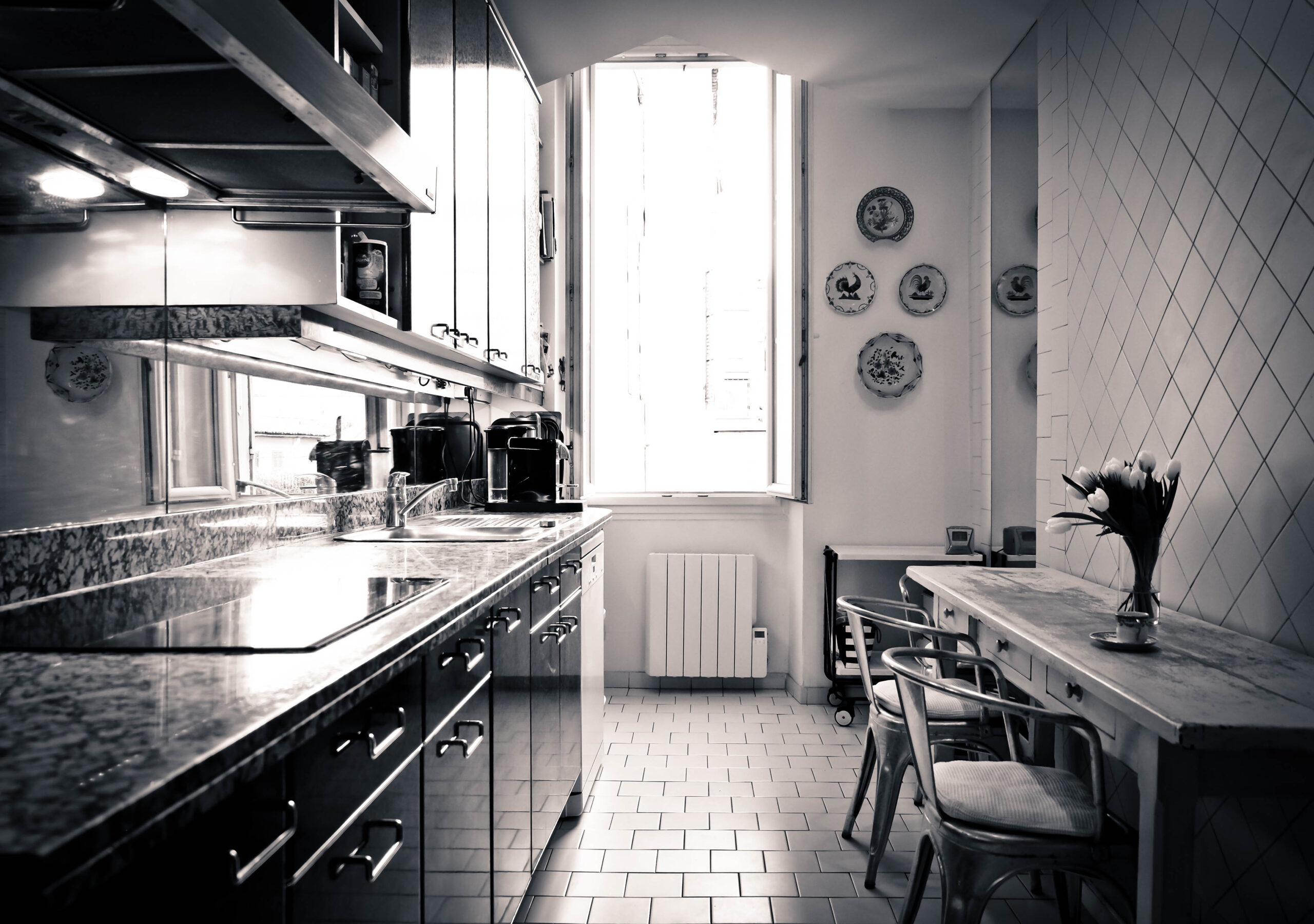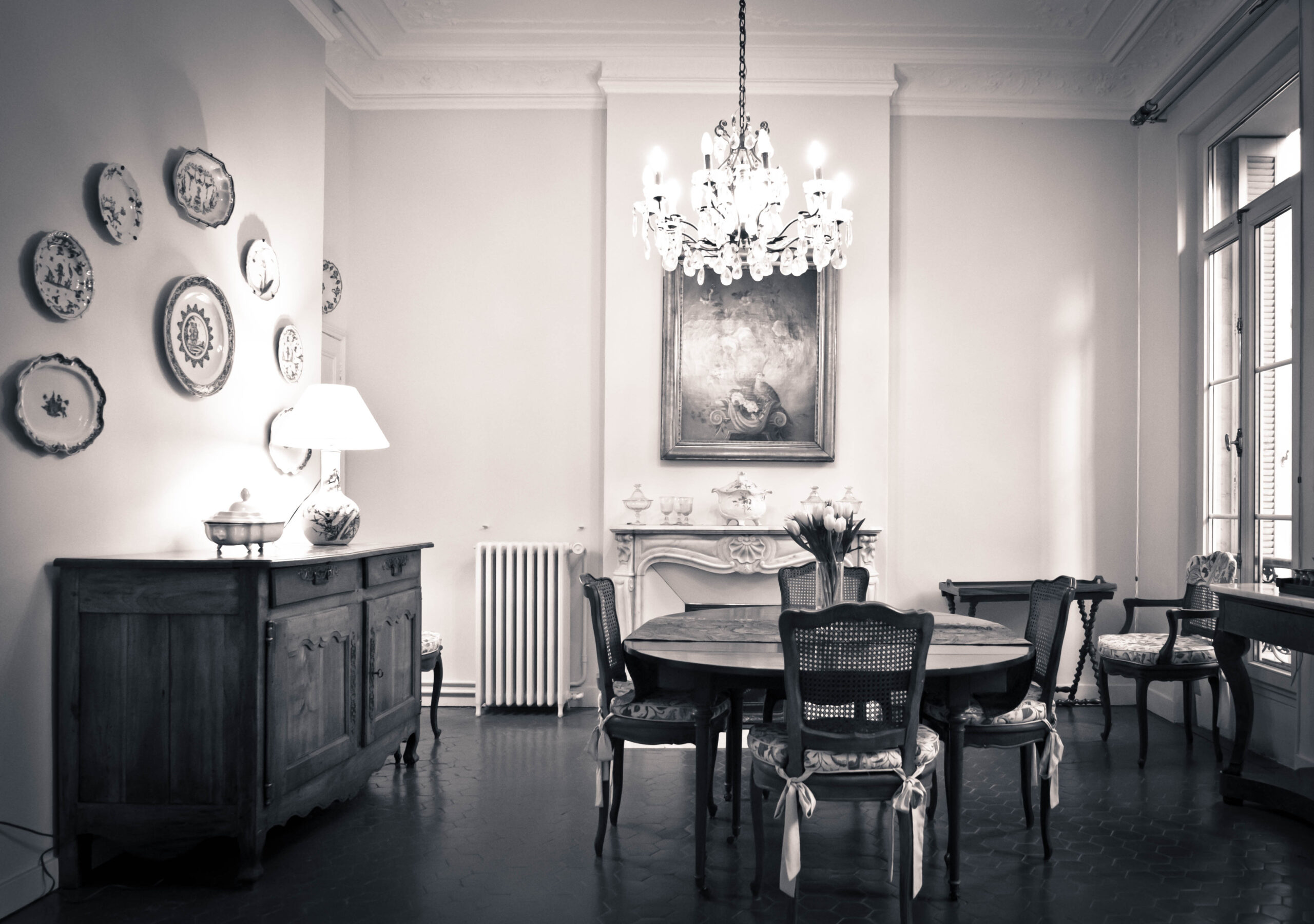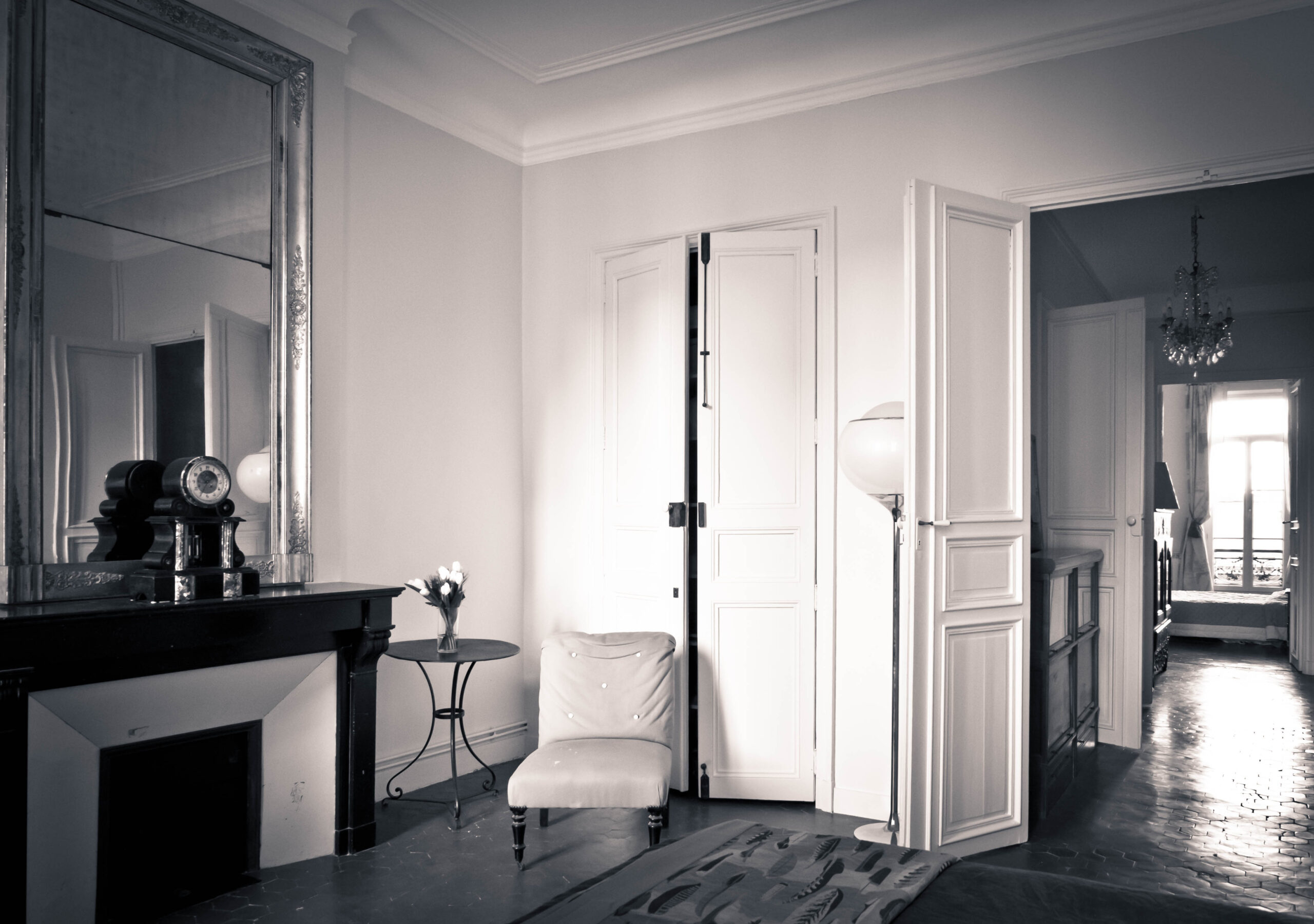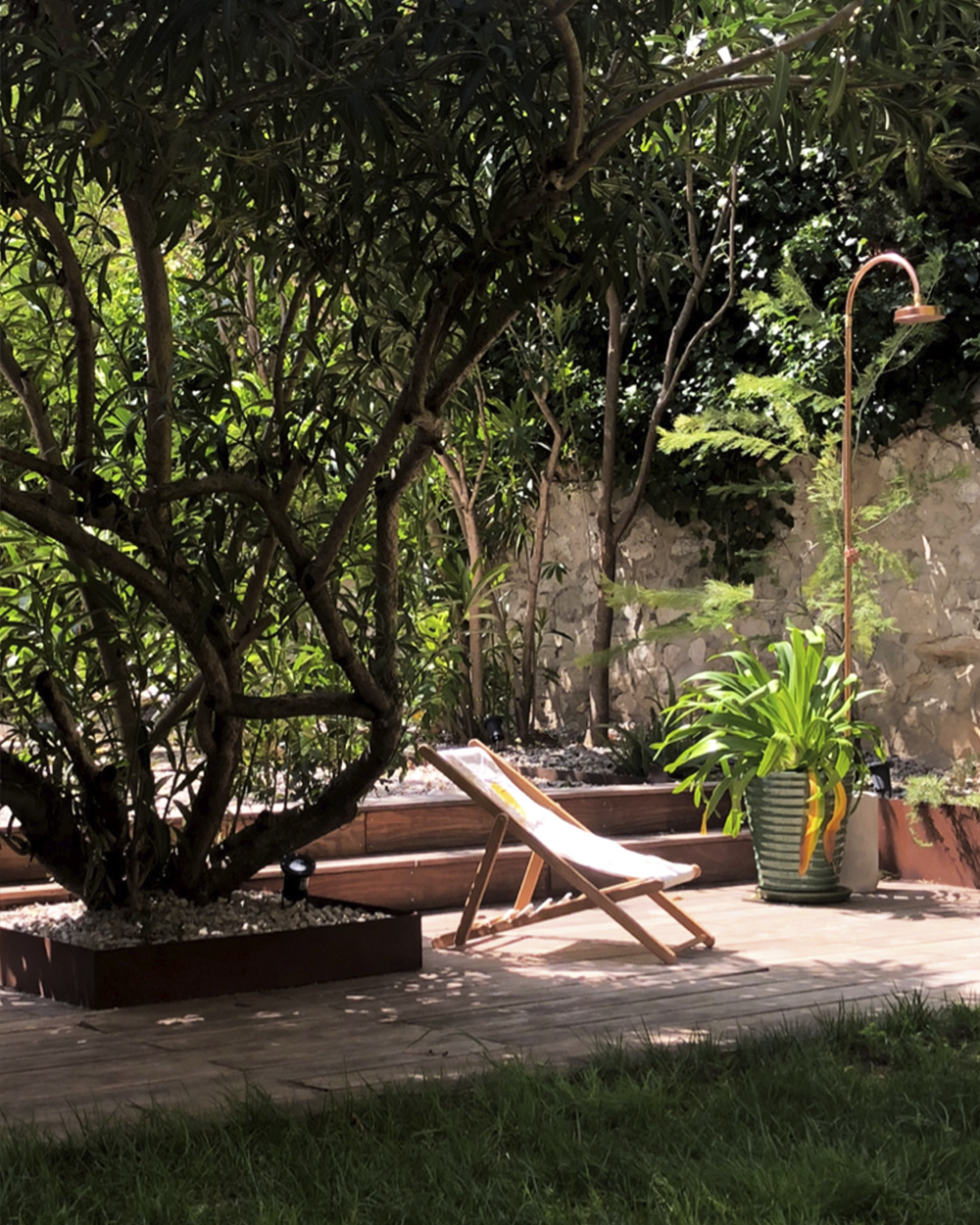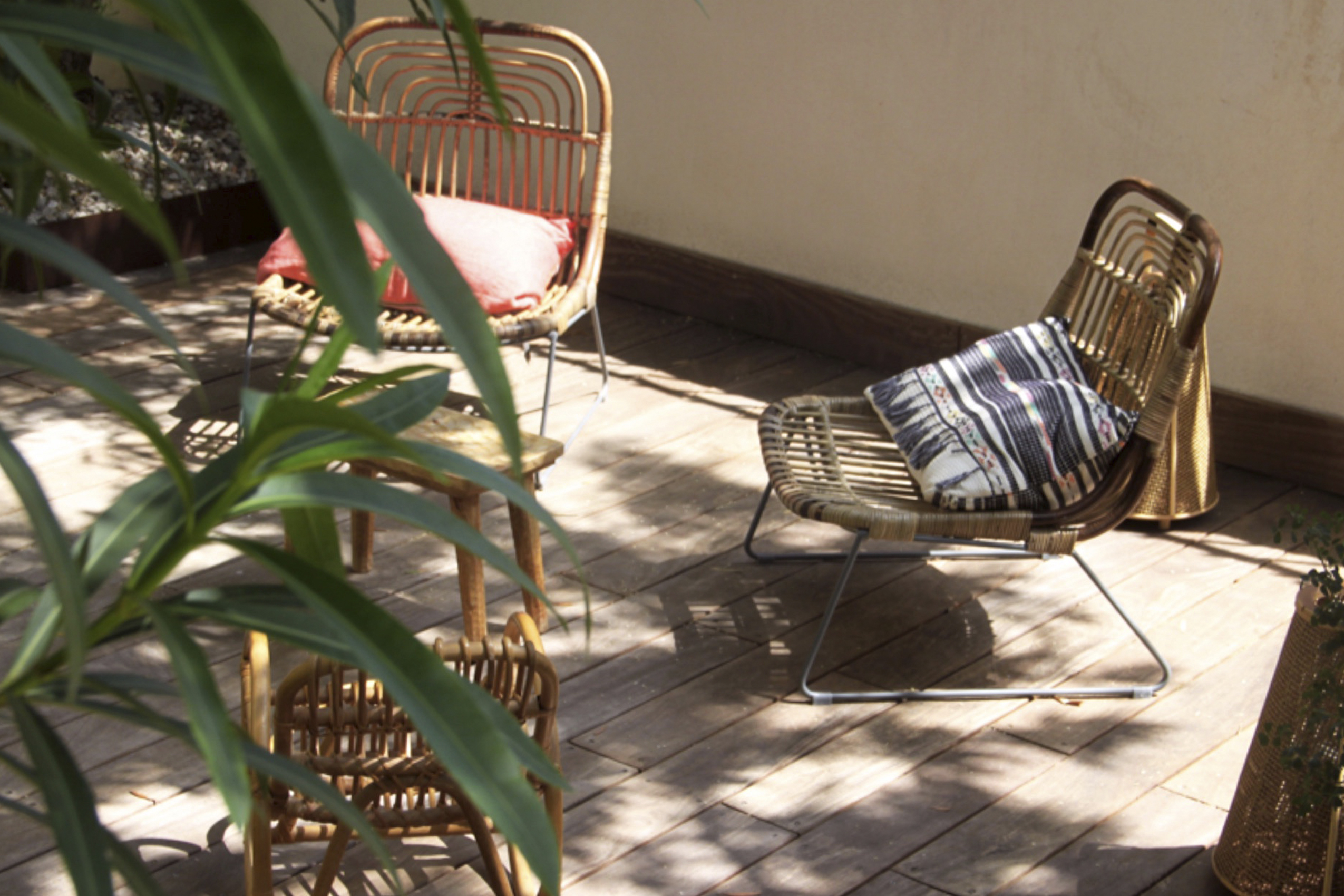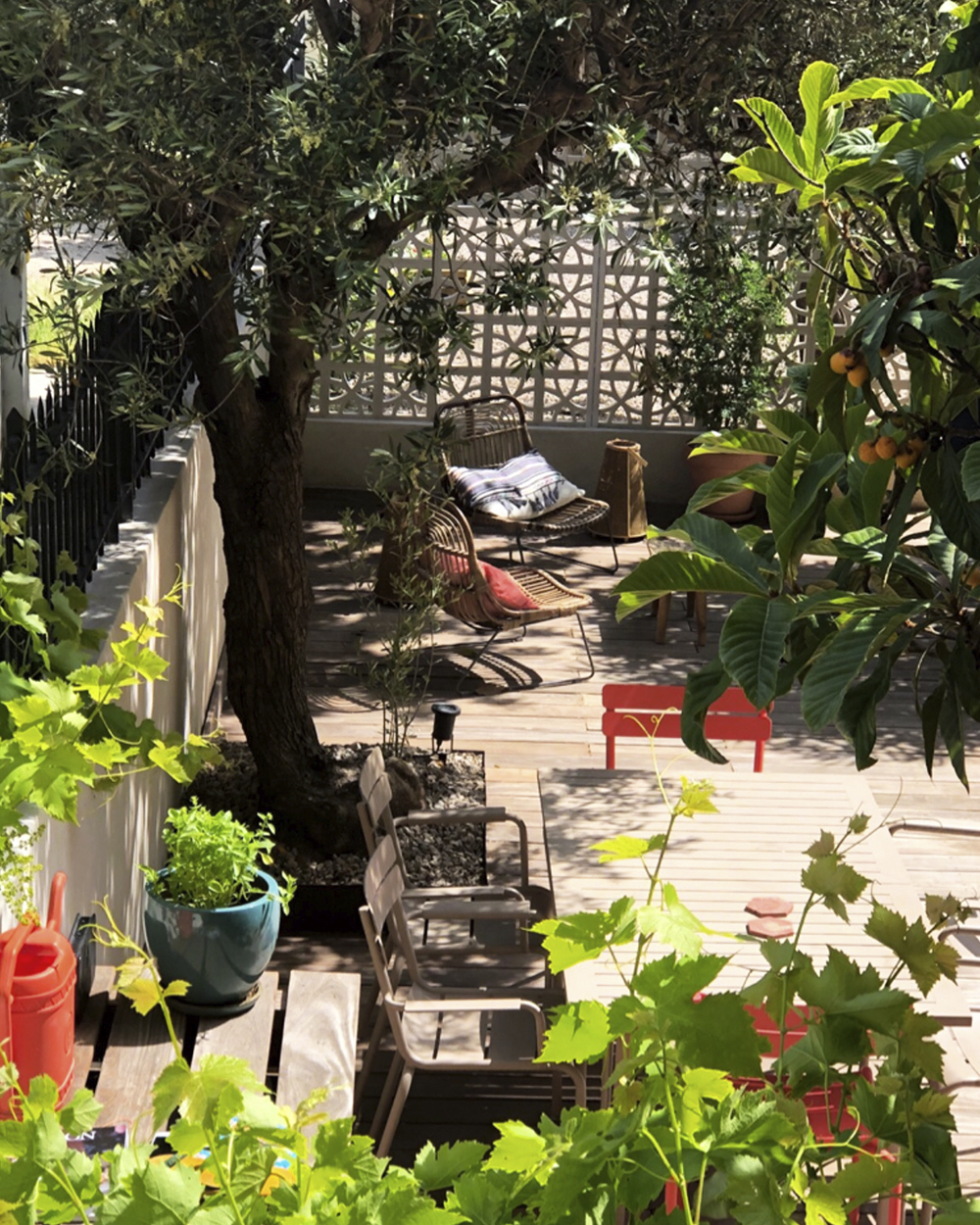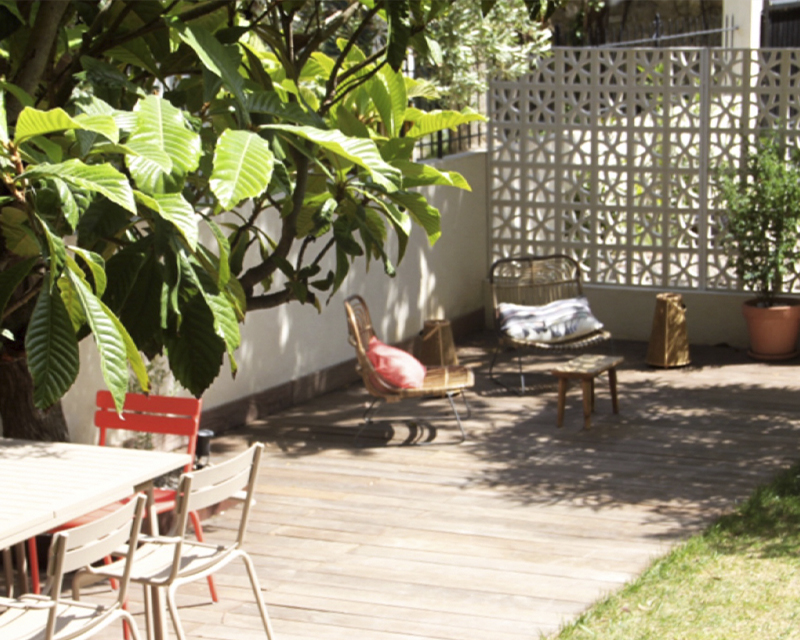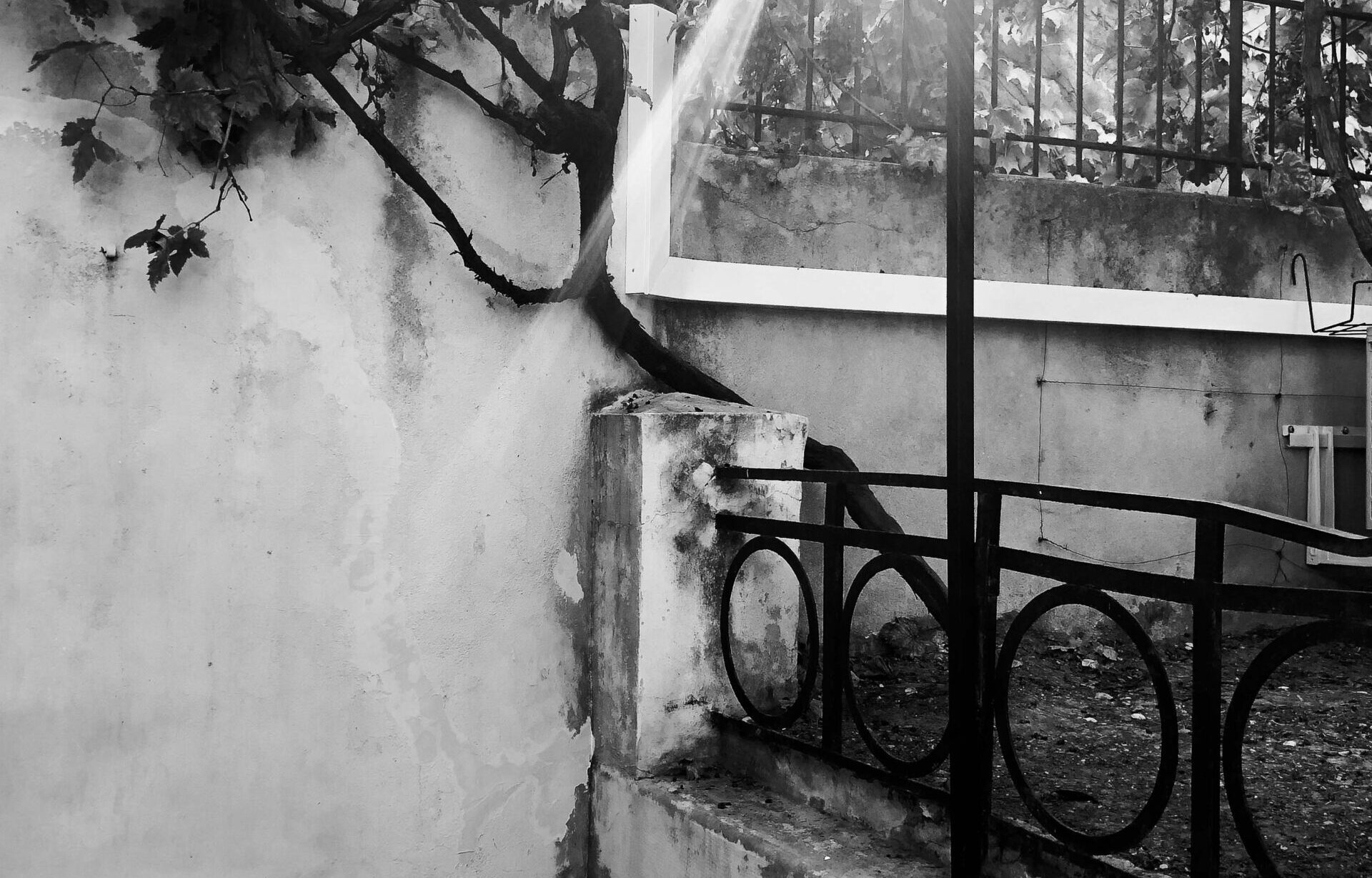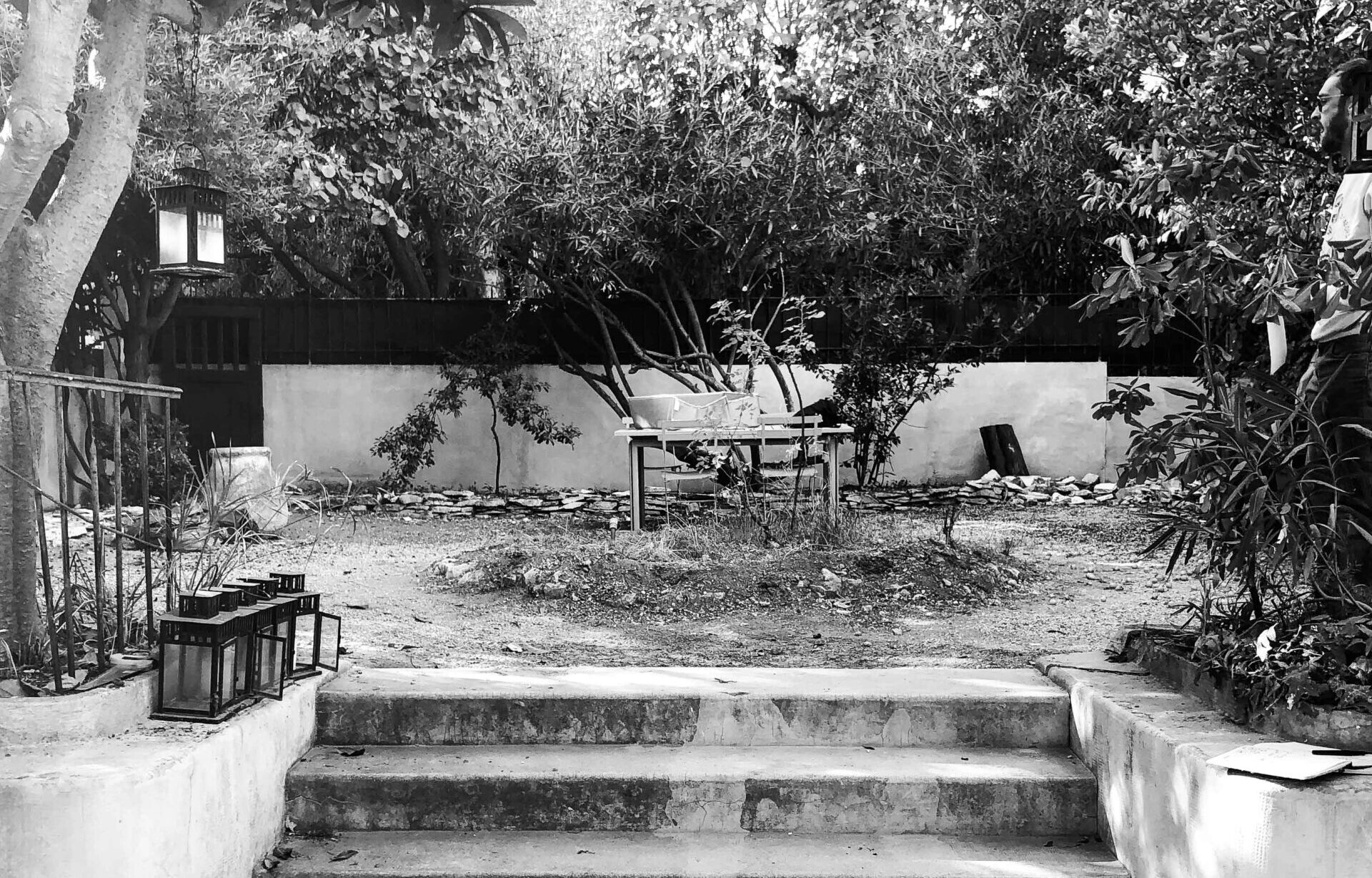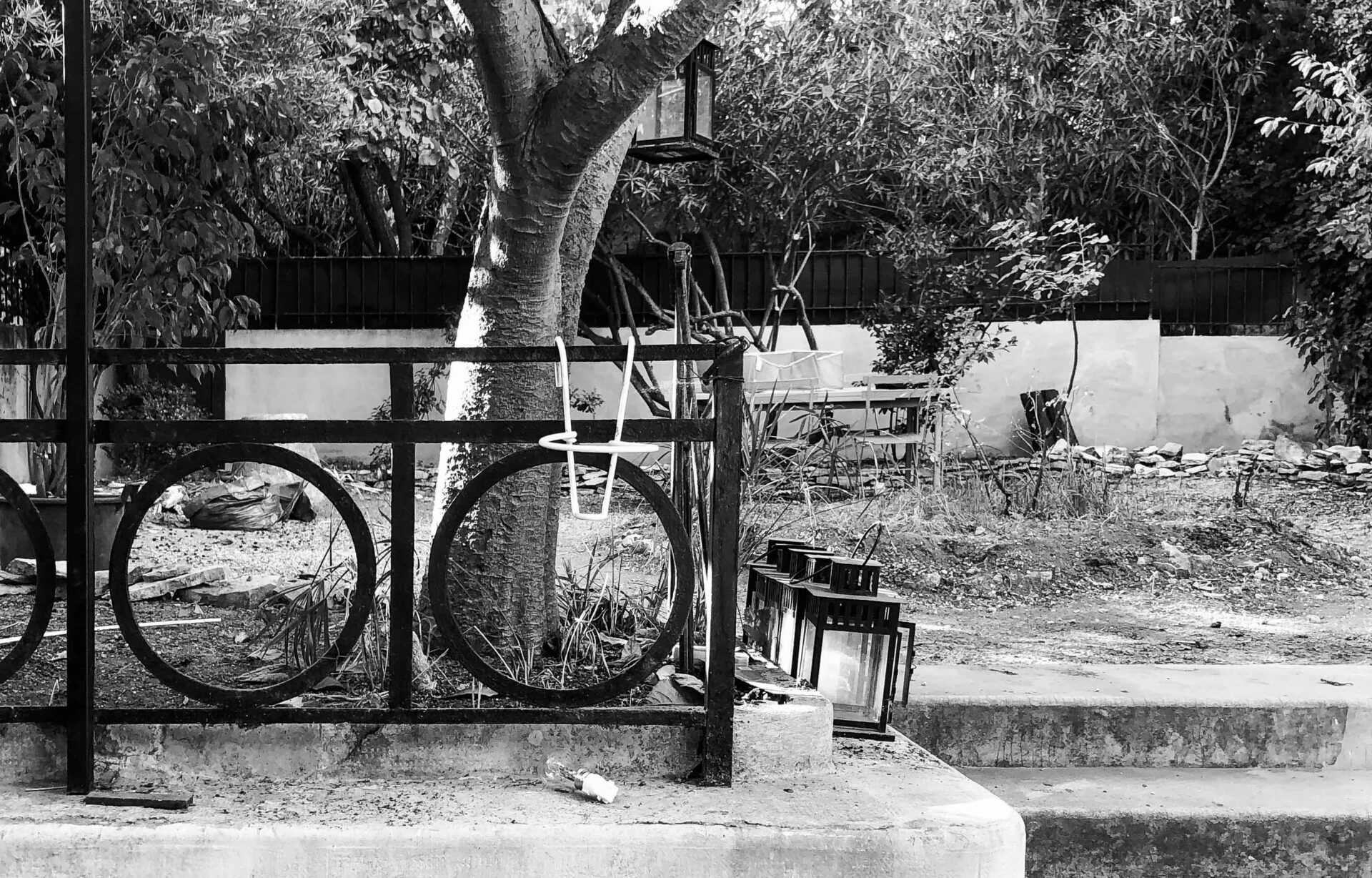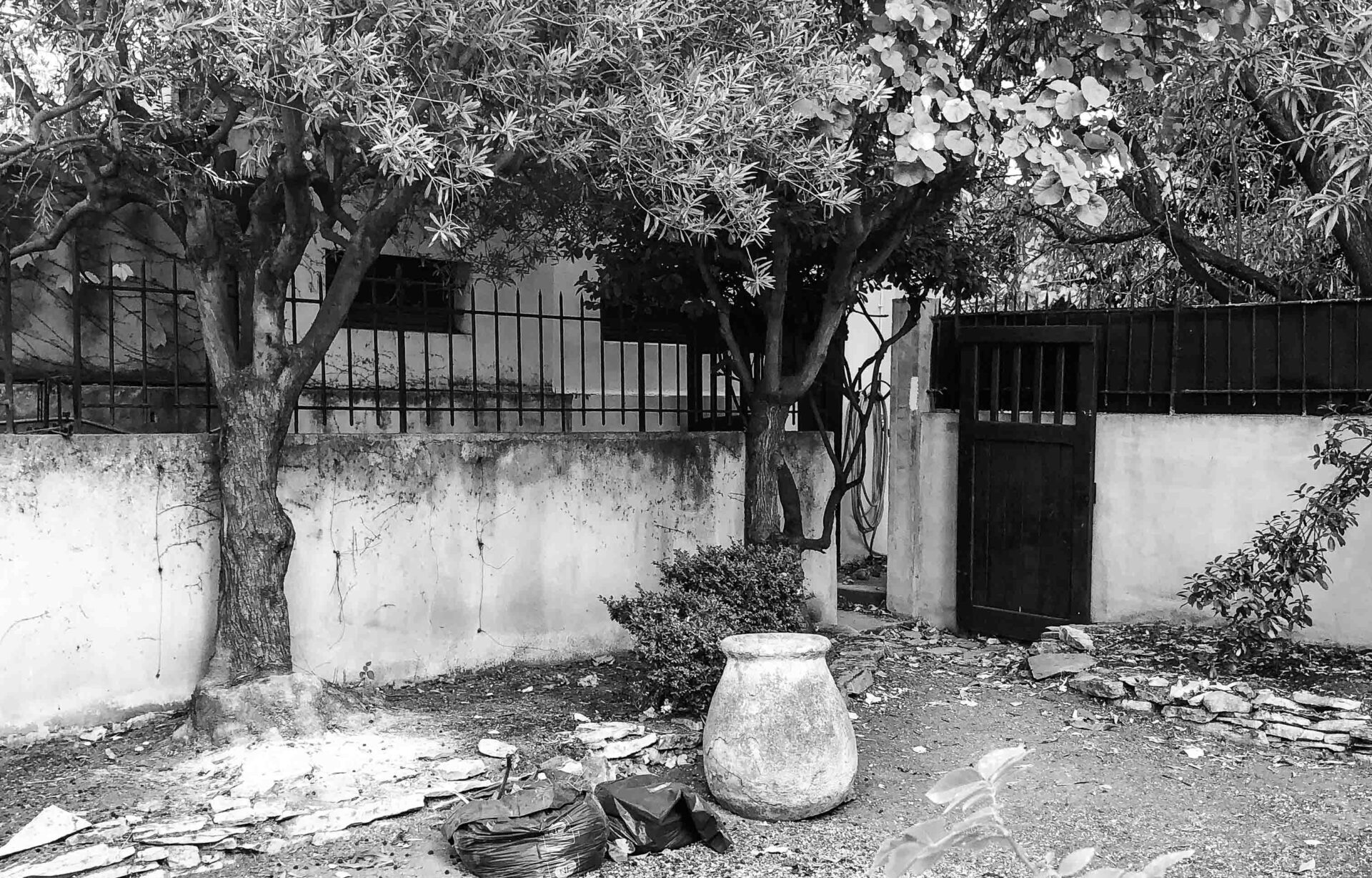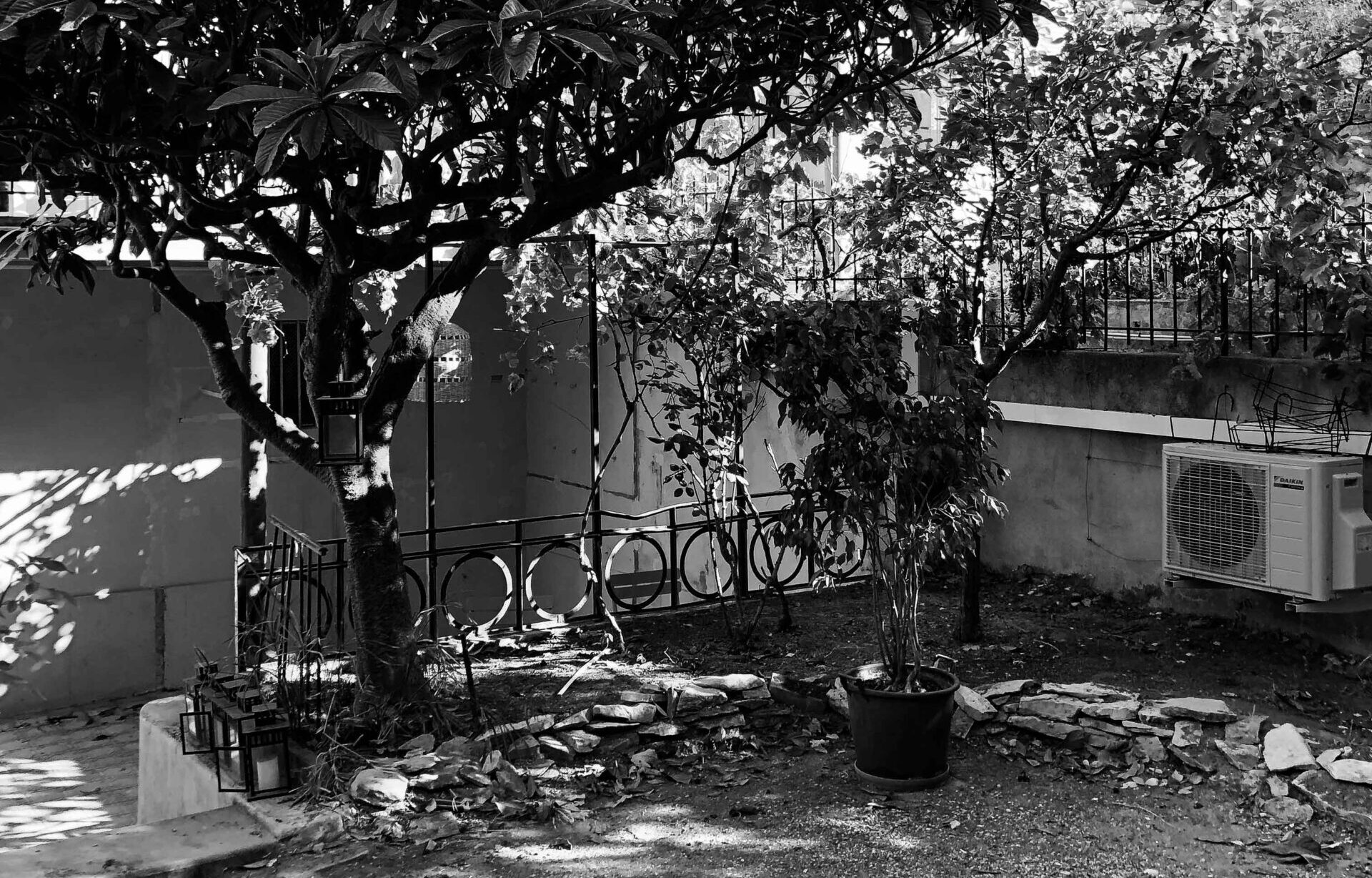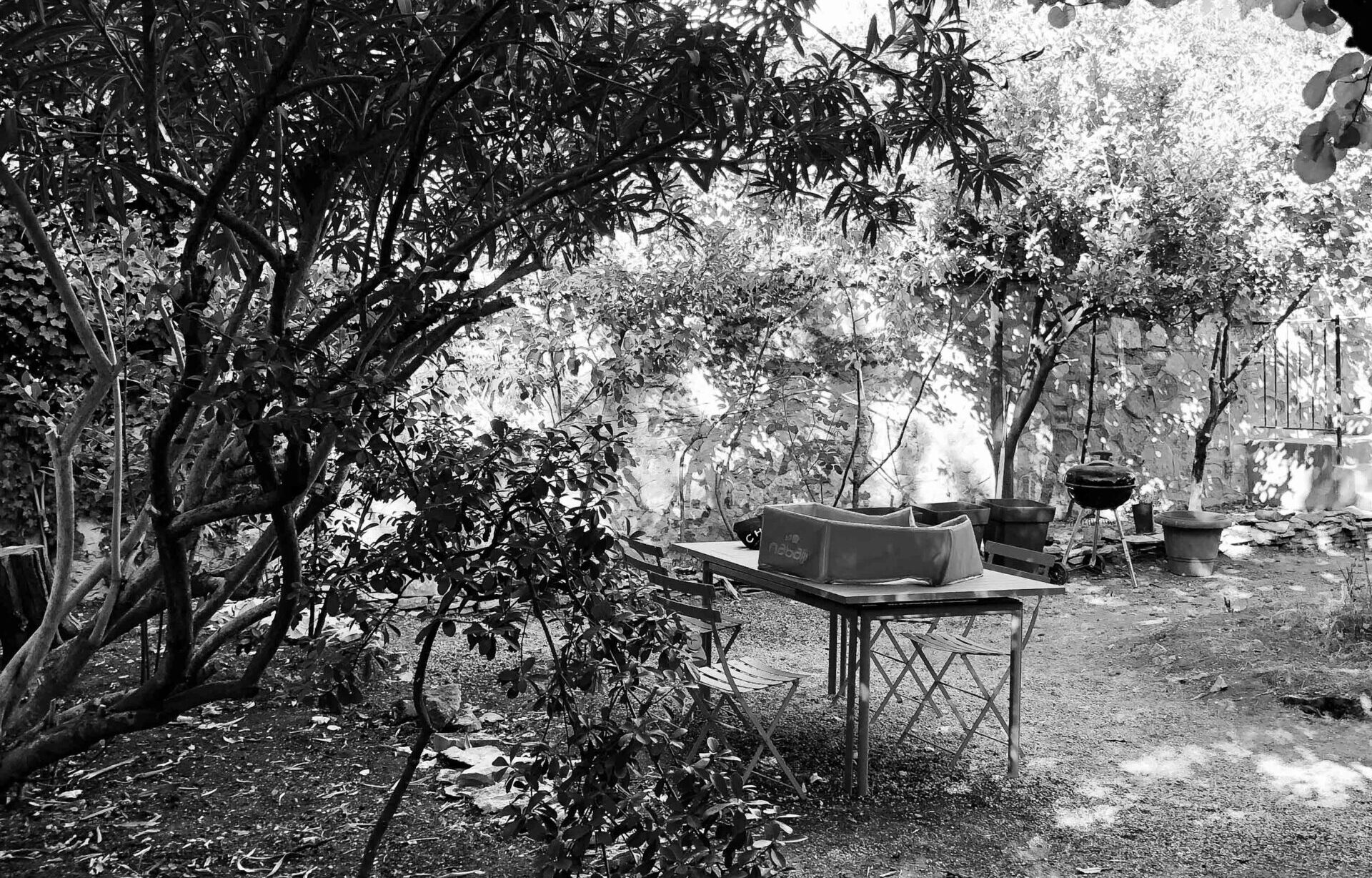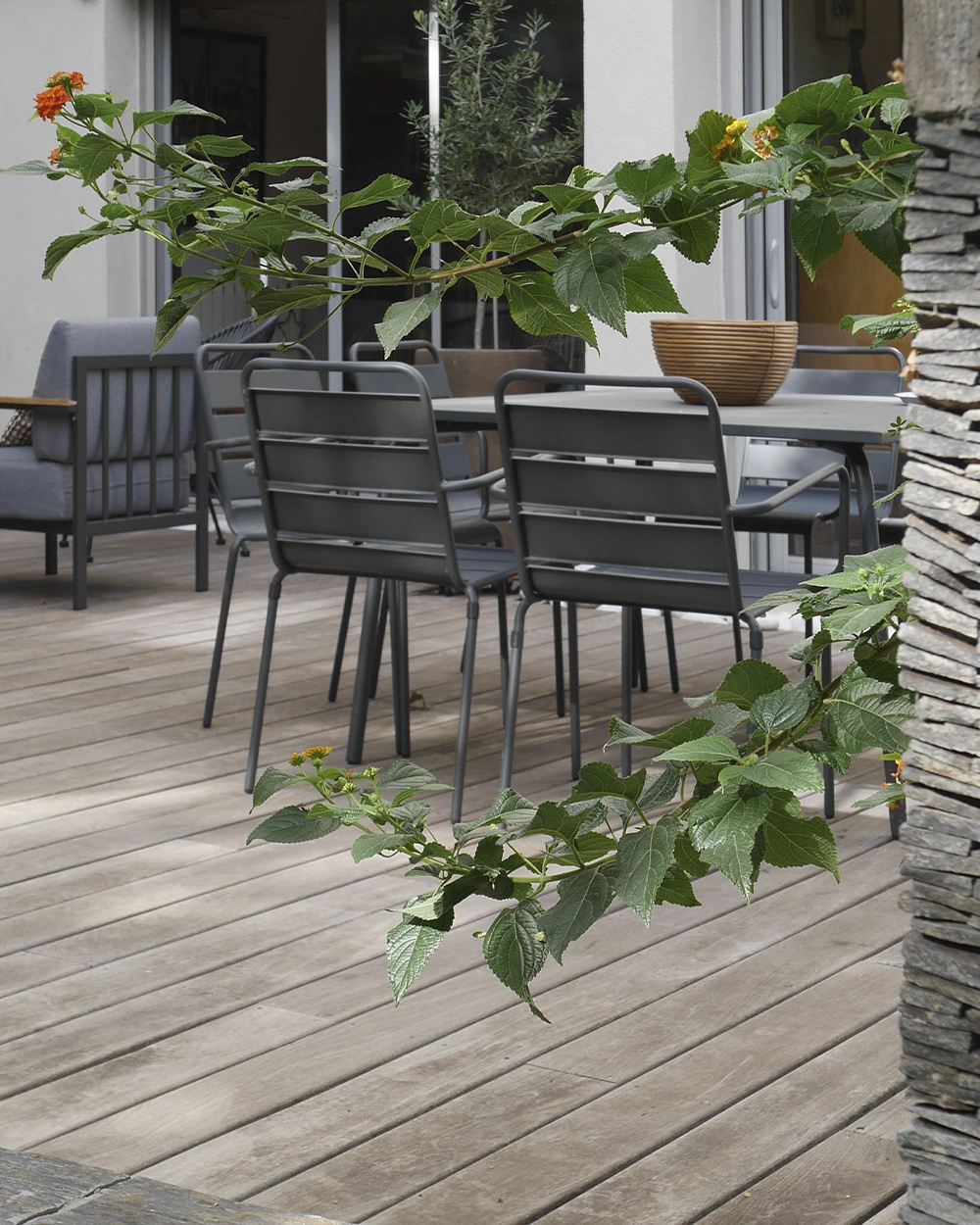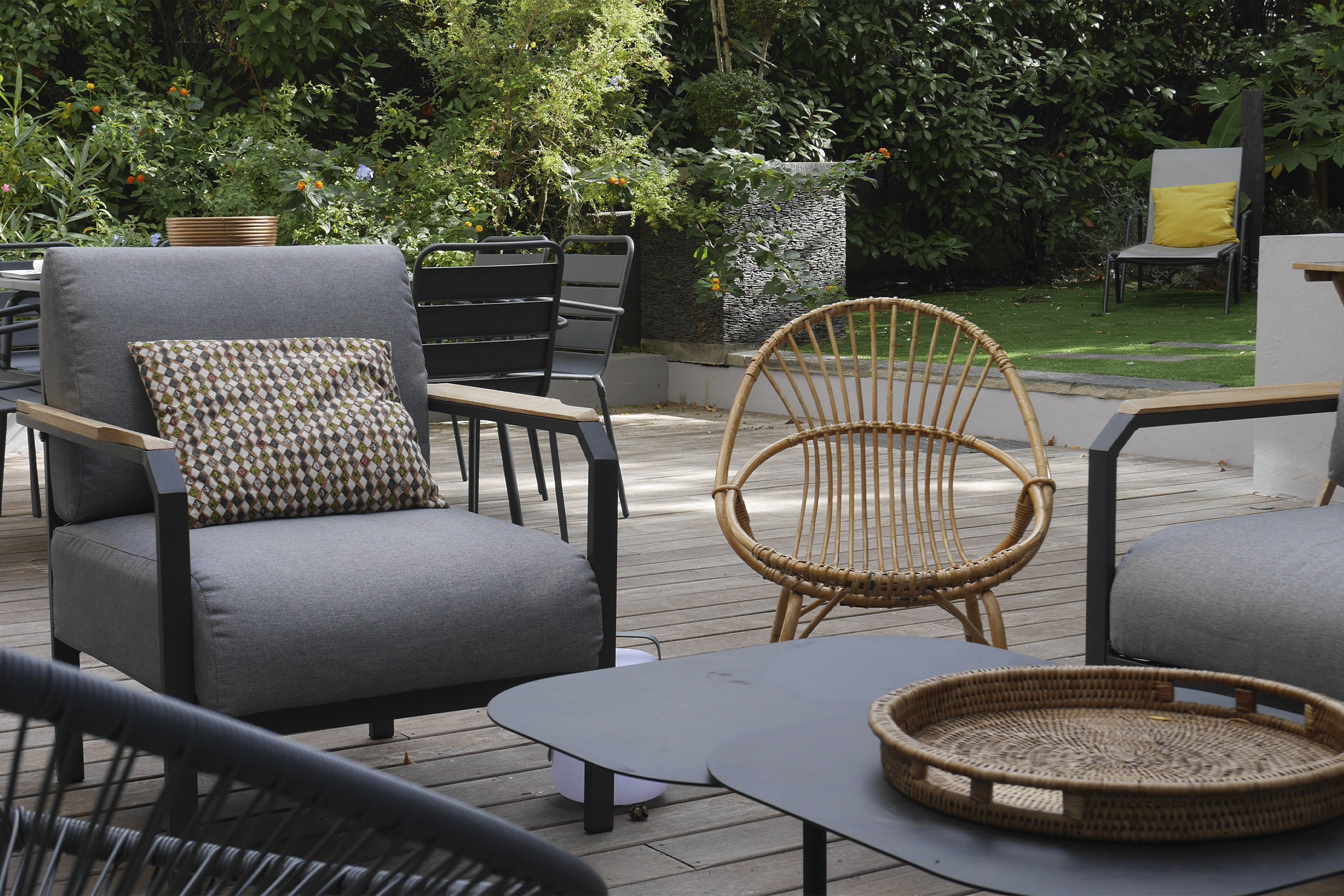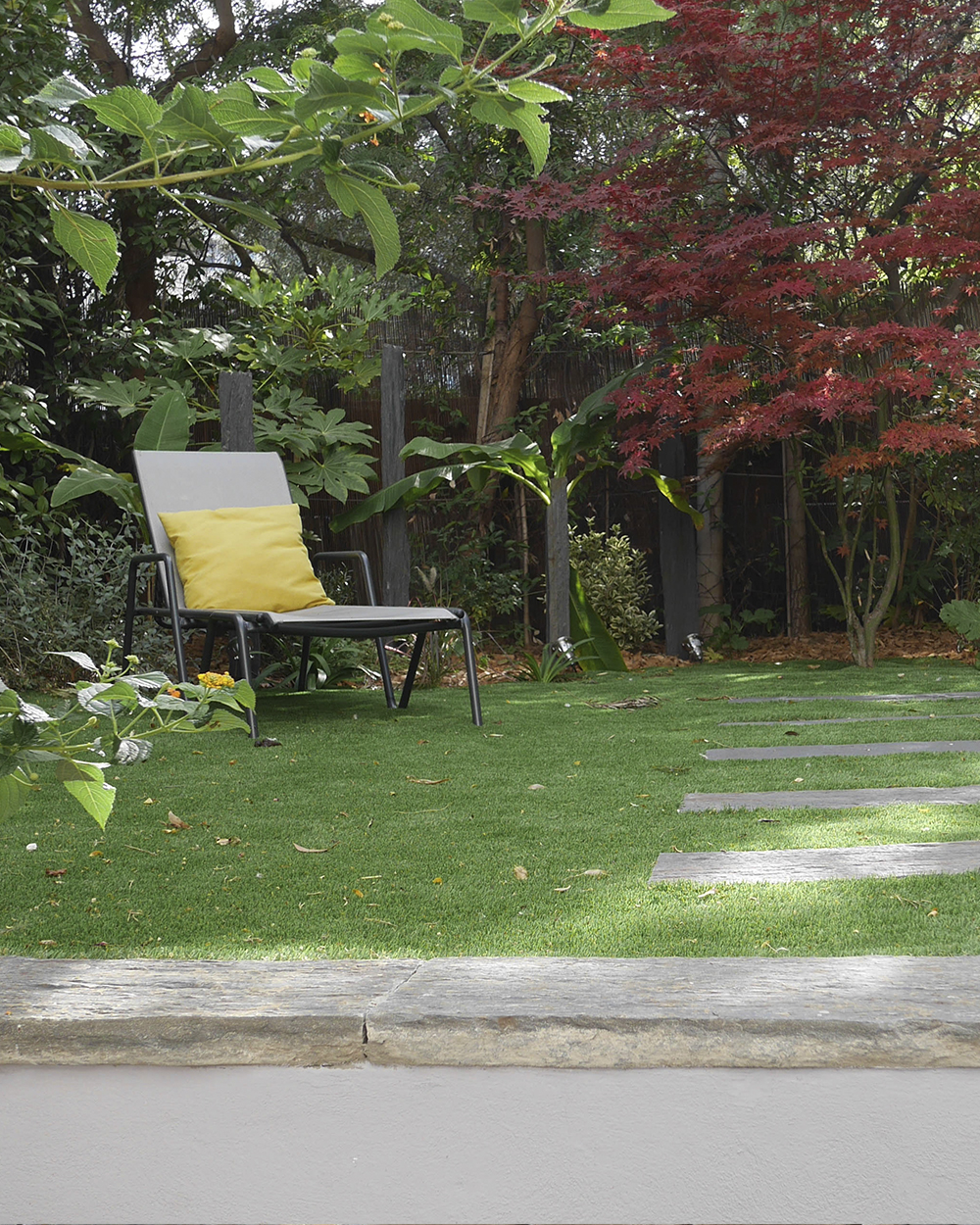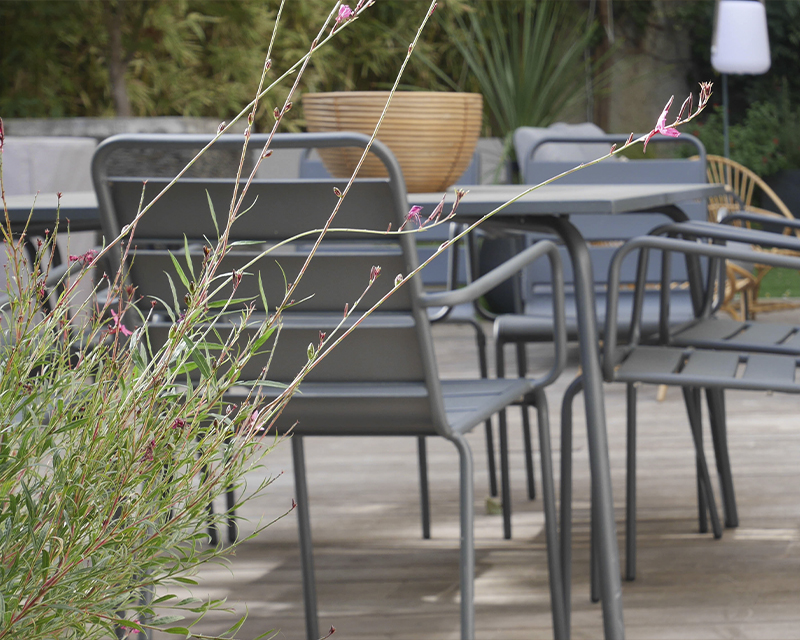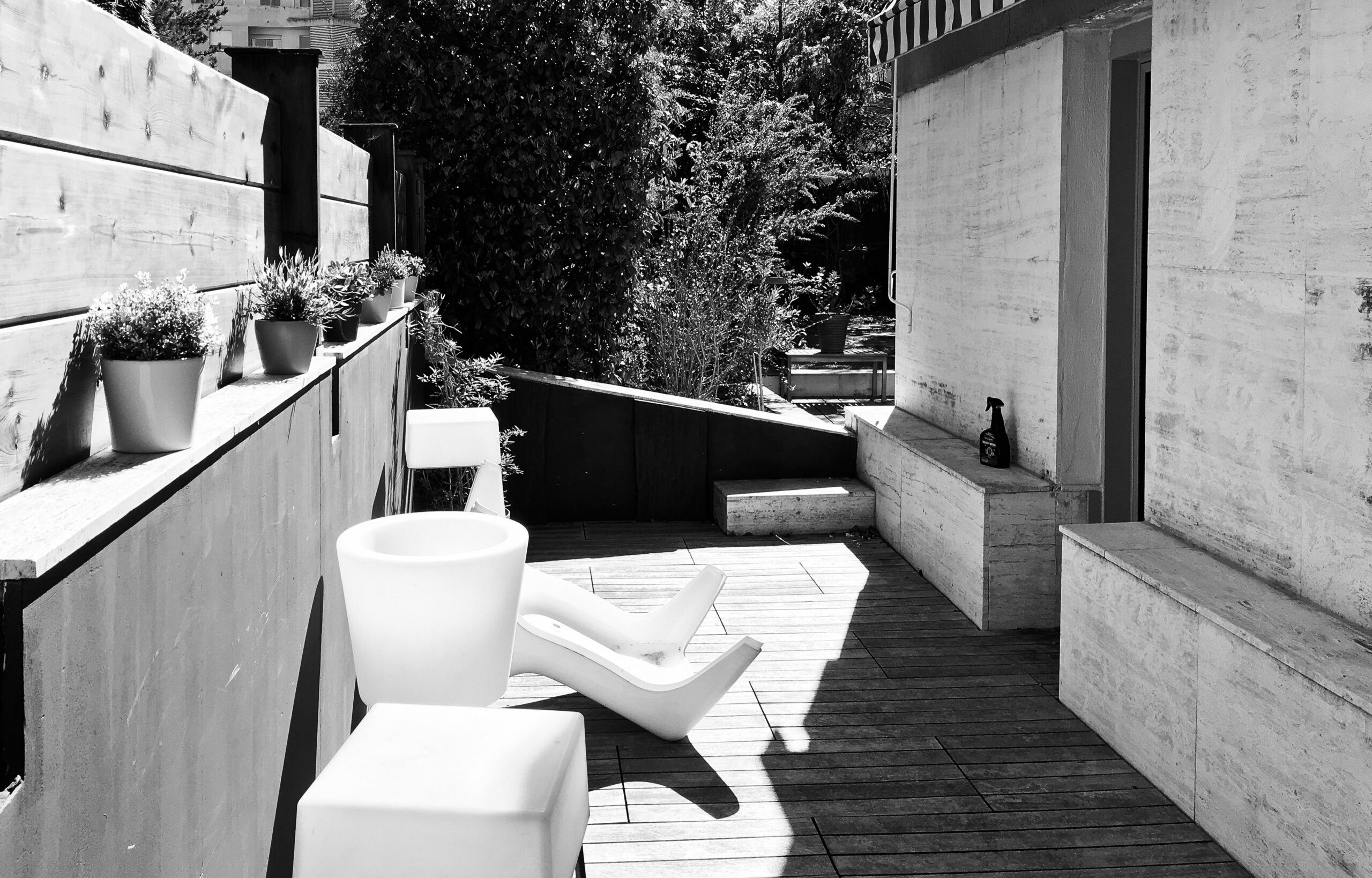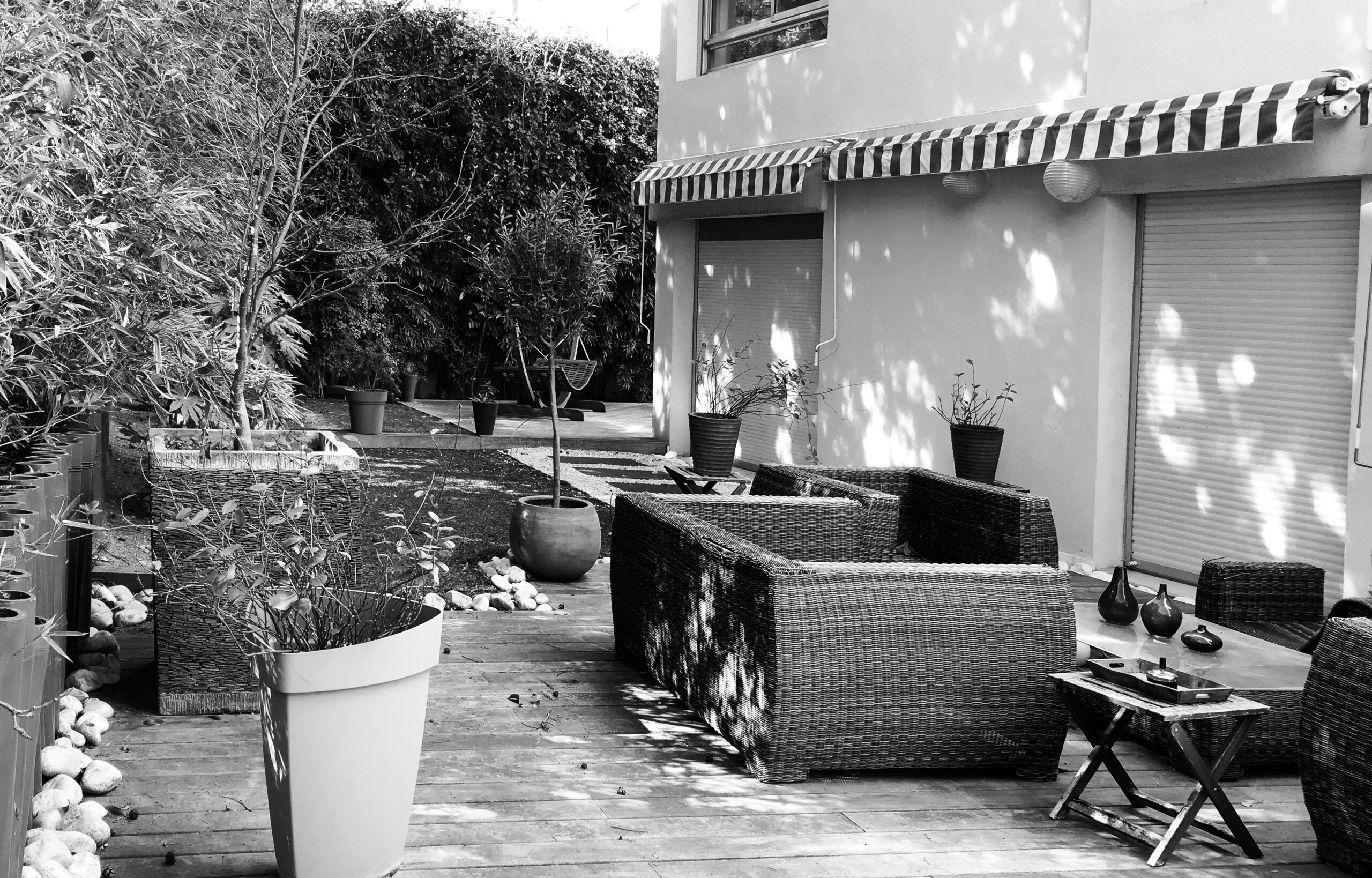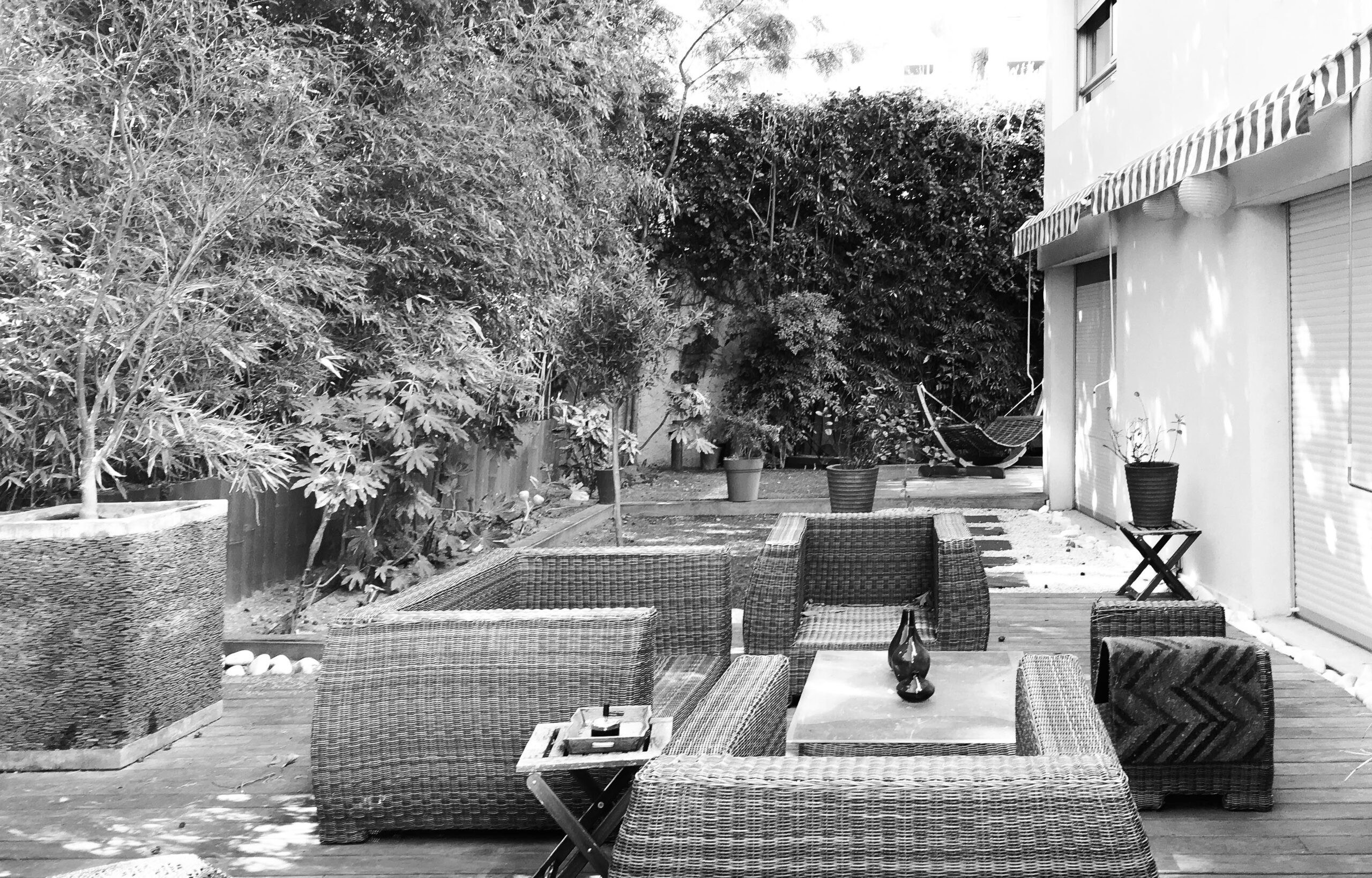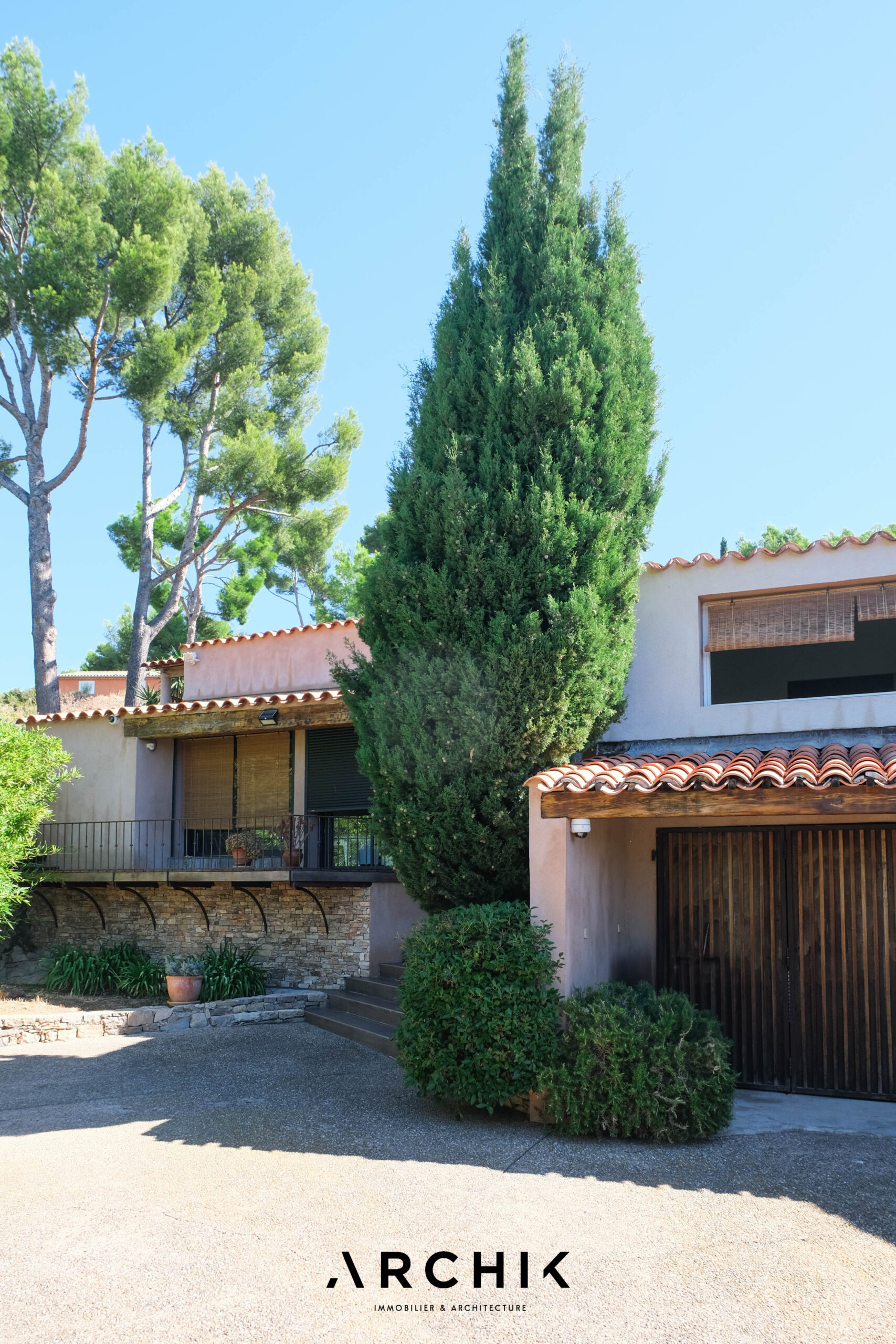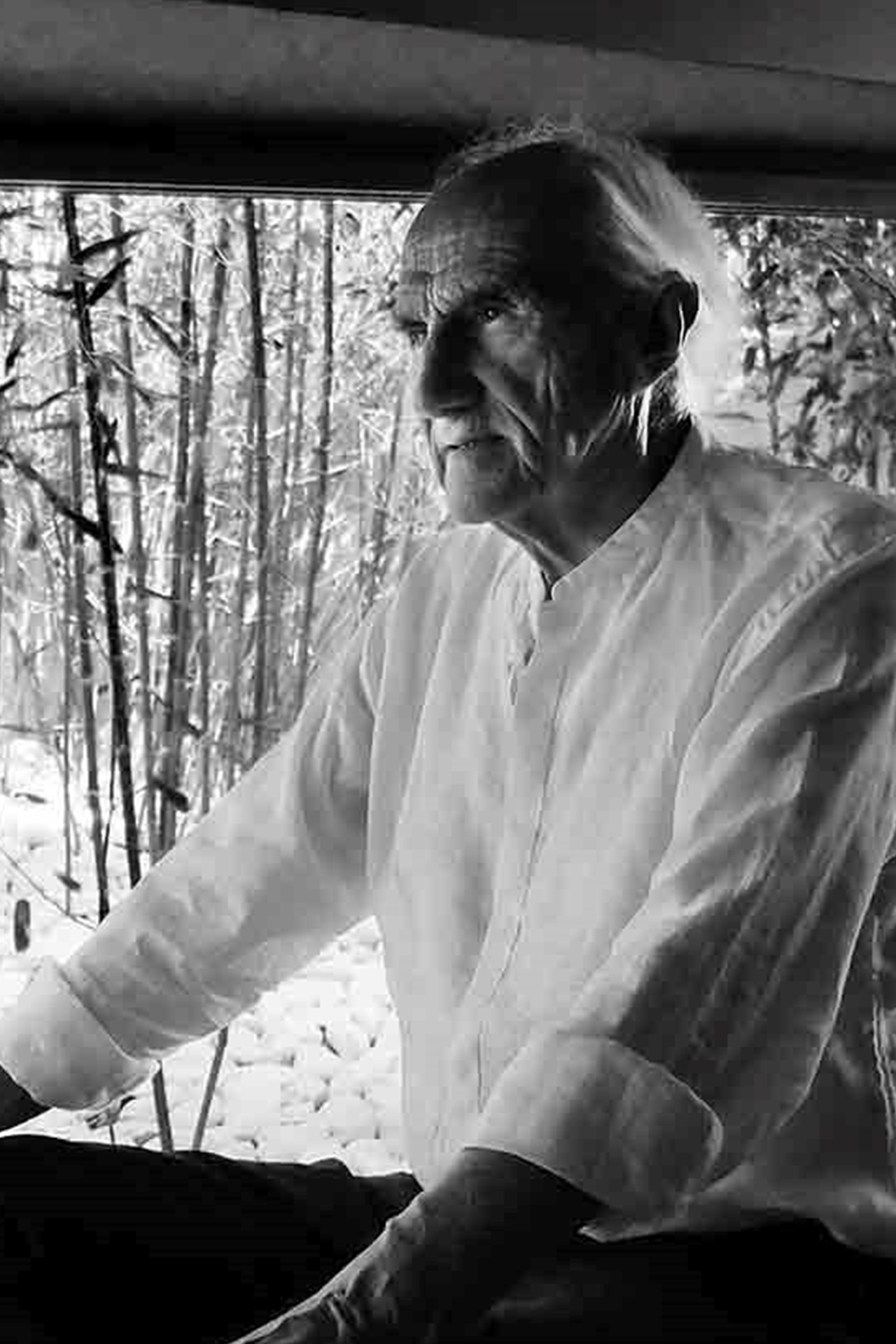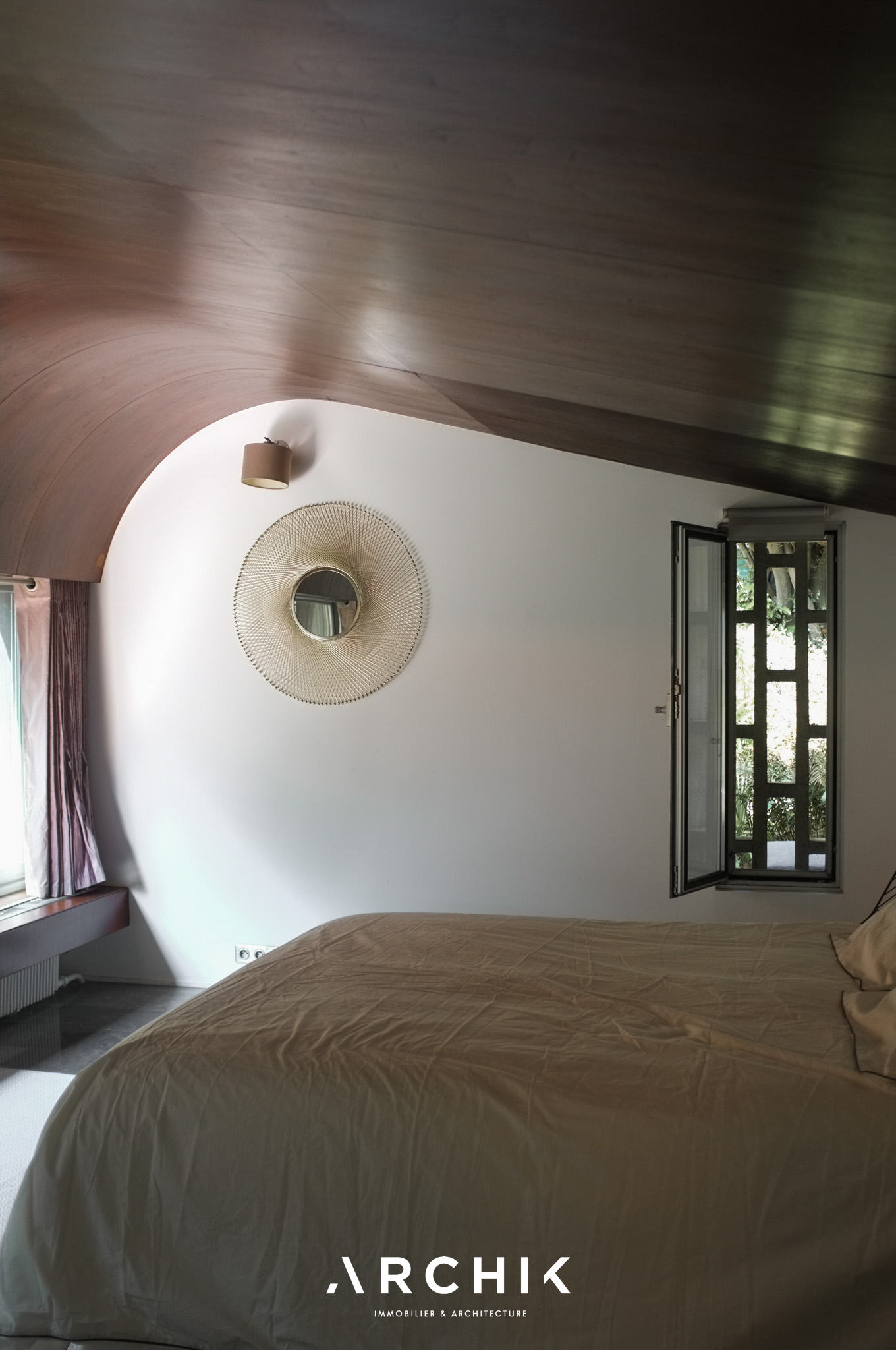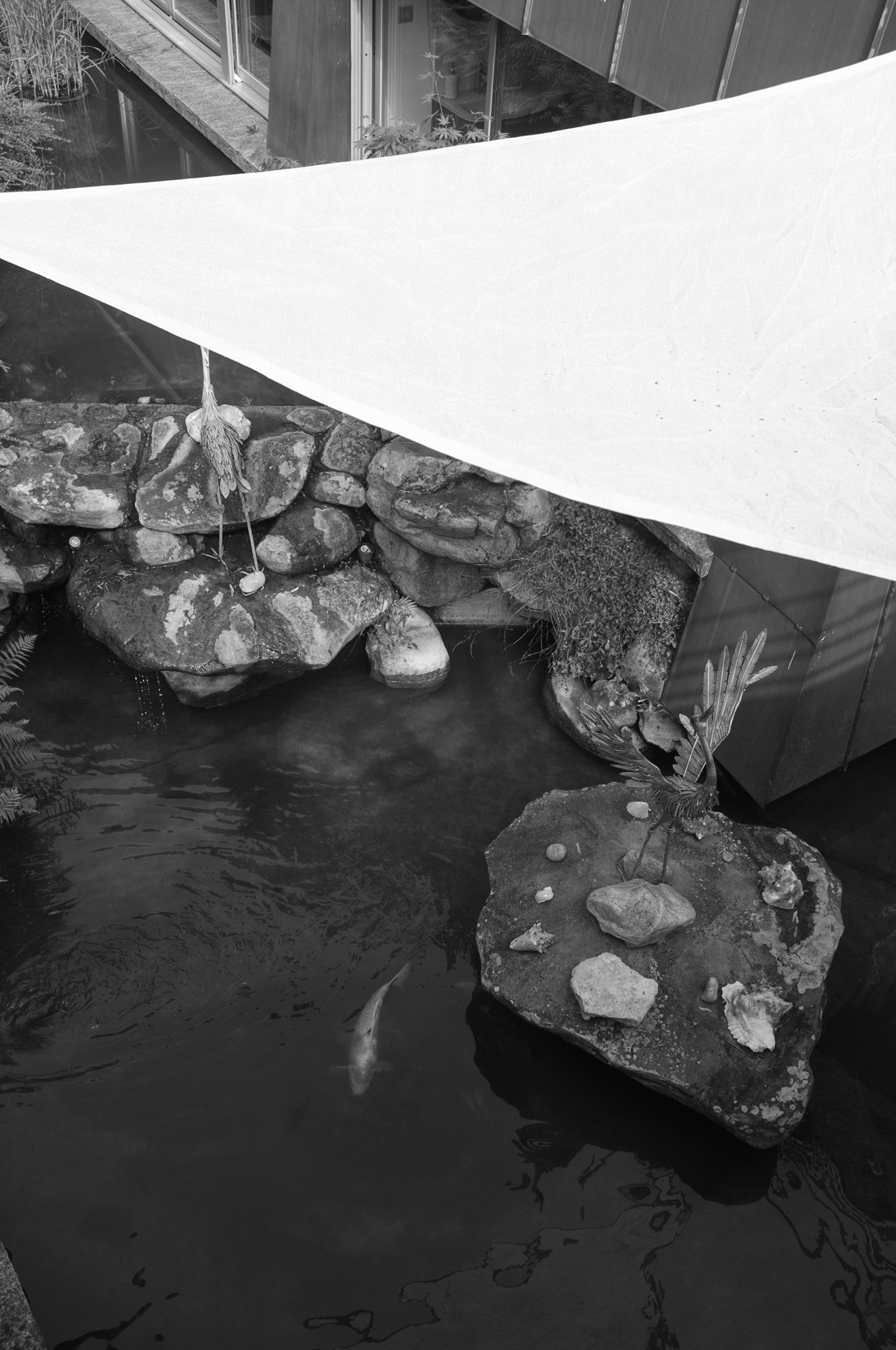This duplex apartment in the heart of the Antiquaires district, is representative of a classic 18th century architecture. It is also a real jewel of historical heritage, perfectly preserved, which was waiting to be revitalised with a more contemporary touch. Revamped by the interior designer Chrystel Laporte, it is the result of a bold gamble: to bring a modern touch to an upper middle-class setting and turn it into a welcoming family flat.

Transforming a flat occupied by a couple into a family flat, making the spaces more functional and personalised, creating a large family kitchen, access to the unused terrace, creating a new bathroom upstairs.
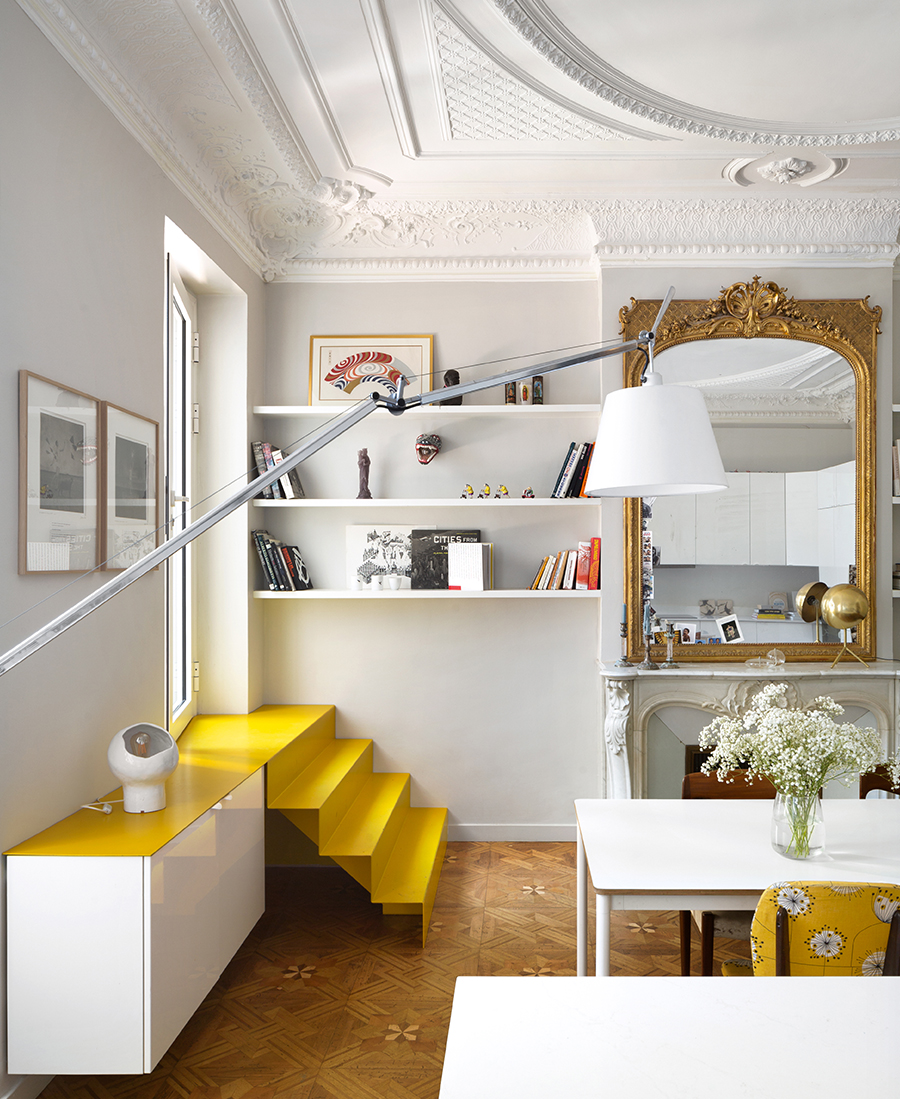
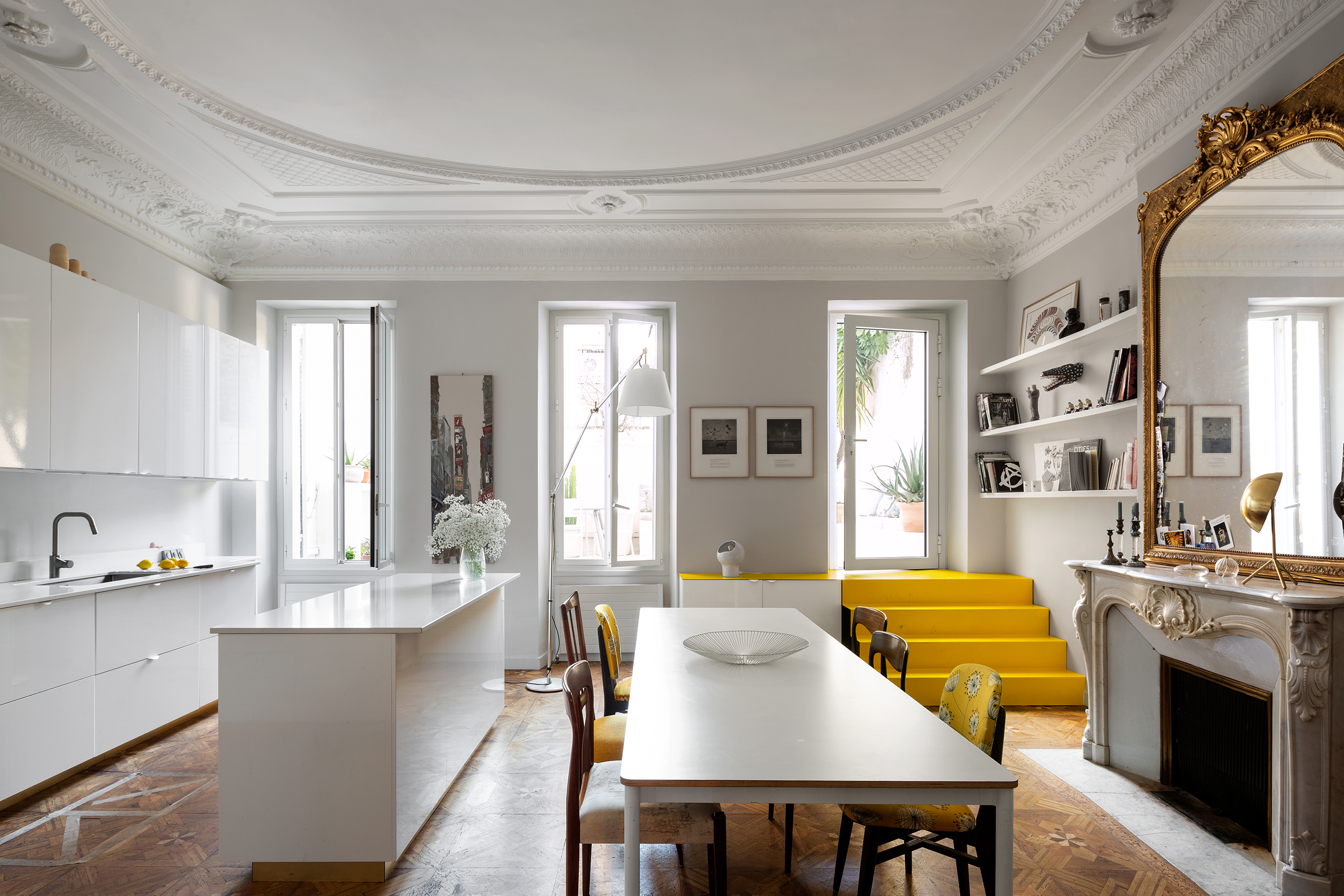

To preserve the charm while modernizing; to bring lightness despite sometimes, little bit loaded elements; to emphasize what makes the flat unique; to be graphic and surprising by creating contrast.

We simplified the existing ornamentation by working with whites and light to enhance it. We renovated the beautiful wood floors, with a more contemporary matt finish. We added more contemporary elements, such as the striated glass on the doors and cement tiles, but still respectful of the style of the architecture. To access the terrace, we designed an arty staircase, in a bright color responding to the immaculate white kitchen. To create contrast, was placed the ultra-contemporary kitchen directly on inlaid parquet, and the light and airy lighting fixtures were chosen to soften the heavy ceiling. We rekindle the terrace with masonry benches, cactus, and white walls, giving to it a nice Mediterranean feel.
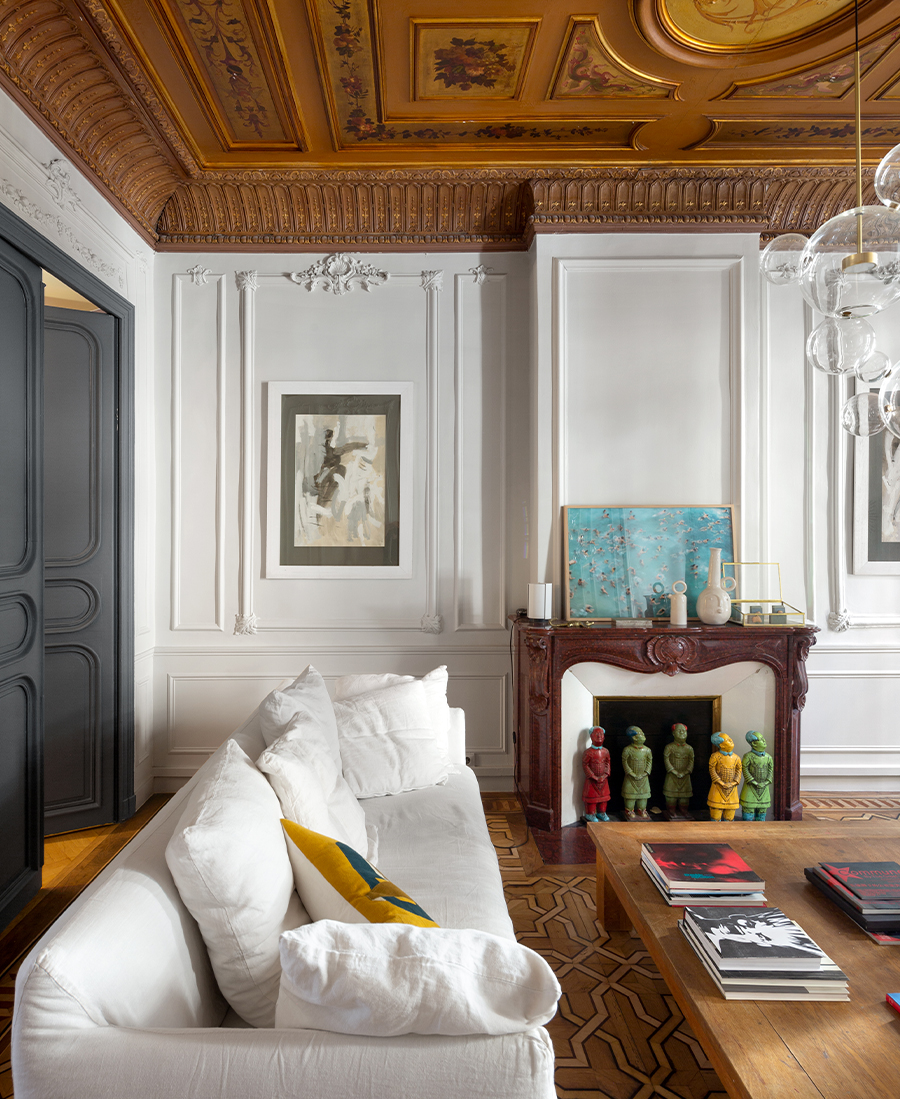
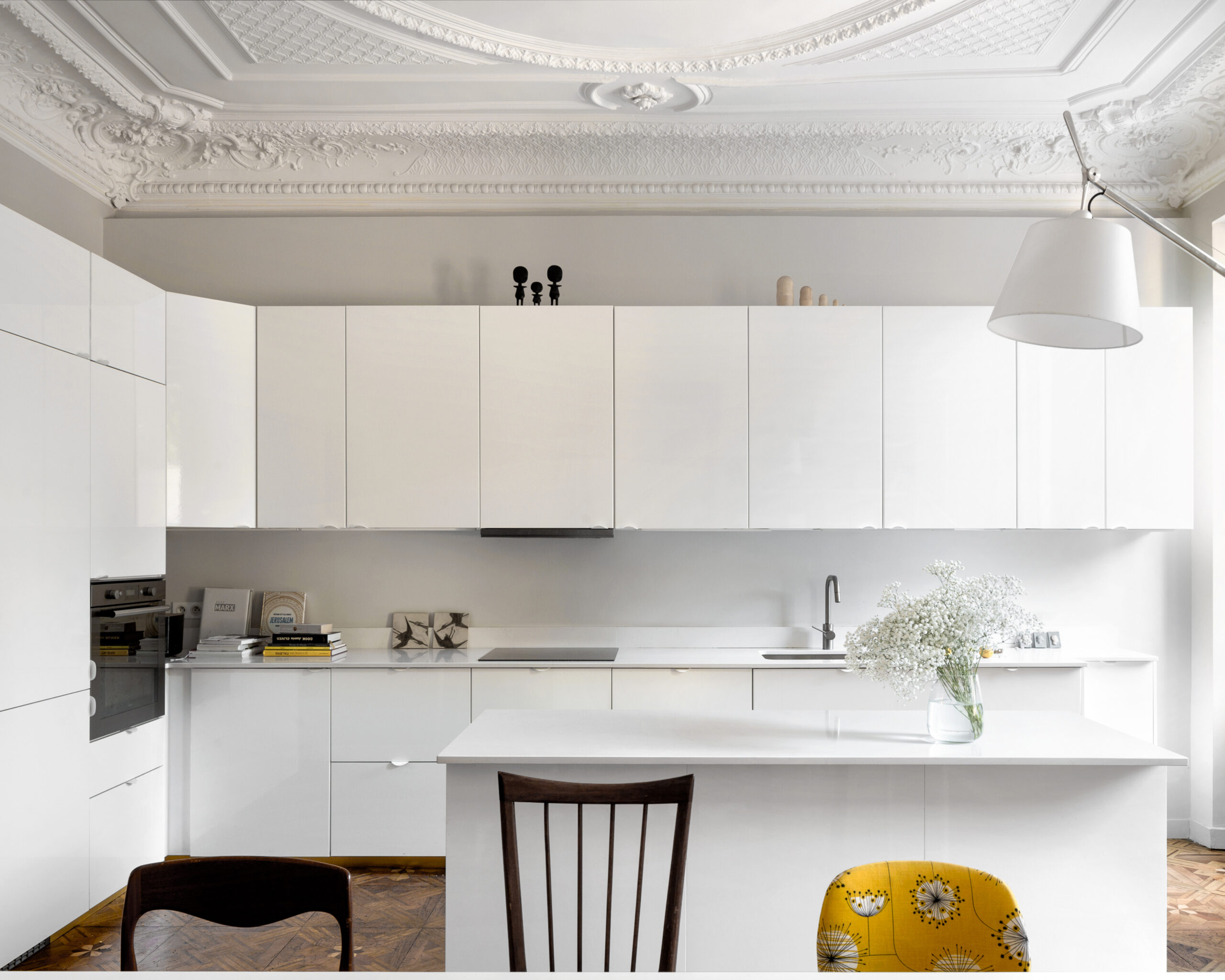
A beautiful re-birth!


